A first-timer’s guide to Ile de Ré

Jul 13, 2021 • 5 min read
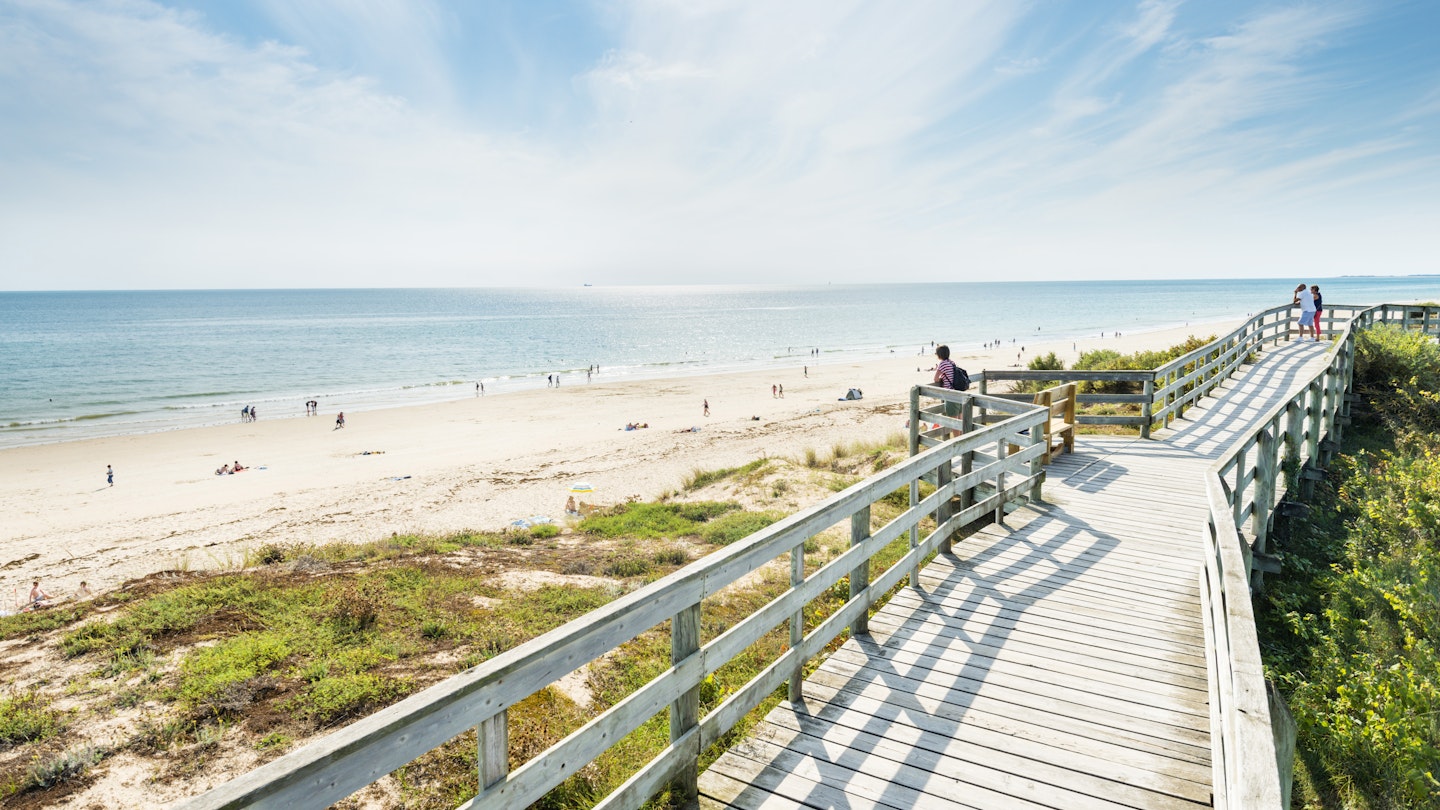
The boardwalk overlooking beach at Blois-Plage-en-Re on Île de Ré © Justin Foulkes / Lonely Planet
Come July and August, irresistible Ile de Ré is where you’ll find half of Paris on their holidays. With absurdly pretty villages, strips of uninterrupted golden fluffy sand and some freshly-caught (but farcically cheap) seafood, this tiny island is laid-back French seaside chic at its best.
Sun, sea, sand, salt and cycles are the five elements that work together to make Ile de Ré so appealing, and even during the annual Parisian invasion, you can still find quiet corners of this exquisite Atlantic outpost if you know where to rummage.
Here’s how first-timers can get started on Ile de Ré.


Hire a bike
The first thing you’ll notice on Ile de Ré is that everyone is on a bicycle. As the island’s highest point is only 19 meters high and there’s a 100km network of excellent cycle paths, it makes sense to get around on two wheels. Every village has hire shops where you can find tandems, electric bikes, trailers for kids (or, just as often, for dogs) as well as the classic city bike with baskets for your market shopping.
All of the villages are connected by bike lanes, as are almost all of the beaches. Trails dip in and out of vineyards, glide past fields of wheat and poppies and duck through pine forests. One of the wilder landscapes is the nature reserve at Lilleau des Niges on the north-western end, with its salt pans, marshes and thousands of birds. Ile de Ré is only 30km by 5km, but it can take at least two hours to cycle from one end to another – worth bearing in mind if you’re with small children.
You might also like this: First time Paris: top tips for your first visit to the City of Light
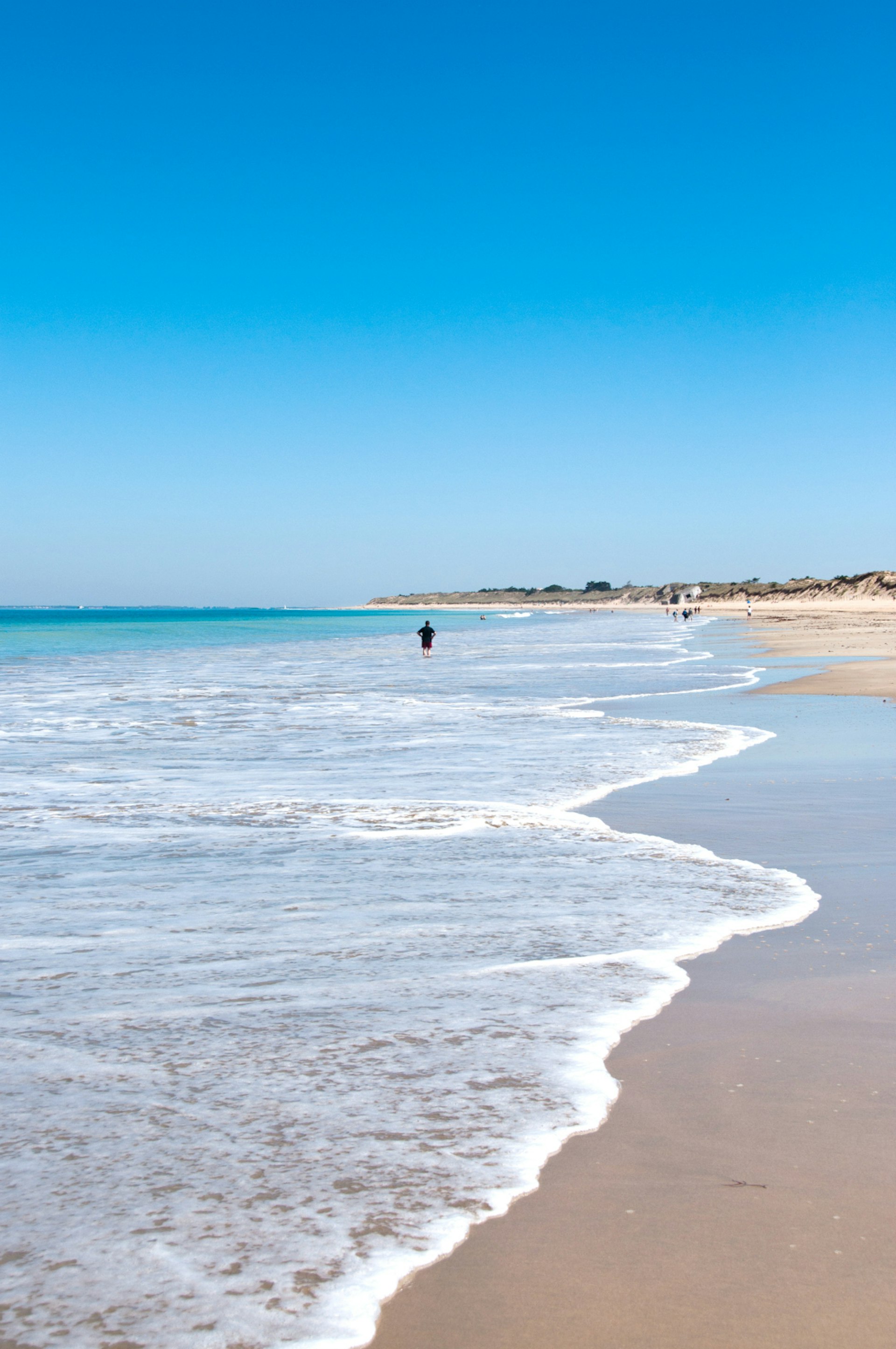
Best beaches
Sandy beaches cover much of the island’s coast, which curls into a fishhook at its western end. And that’s where you want to go to avoid the summertime crowds.
The beaches on the southern side are closer to the main villages and, as a result, are more popular. However, outside of the main July-August holiday period (which starts to calm down from the third week of August), the dozen beaches that form an unbroken sandy chain around the island are surprisingly spacious.
Plage de la Conche des Baleines
Plage de la Conche des Baleines is one long sweep of sand backed by dunes and pine forests, merging into Plage de la Conche and Plage du Lizay. You won’t find ordered rows of rented sun loungers here – just sand and the occasional rollicking surf.
Les Portes-en-Ré
Carry on to Les Portes-en-Ré for another collection of beaches, including the sheltered Plage du Trousse Chemise and Plage de la Patache.
Plage de Gros Jonc
Surfers should head to Plage de Gros Jonc near Le Bois Plage-en-Ré for gear rental and lessons. If you’re into kayaking, rent a canoe near the village of Loix for a lazy jaunt through the salt marshland.
You might also like this: First-time France: where to go and what to do

Where to eat
If you love fresh seafood, it’s hard to think of a more satisfying way of spending an afternoon than trawling through the oyster shacks along the marshes at Ile de Ré’s western coast. The marshes teem with oysters and mussels, interspersed with salt pans where the island’s prized sea salt is still harvested by hand.
Many of the oyster producers offer tastings on the spot for quite unbelievably low prices - and the equally cheap takeaway costs will make you want to test your own shucking skills as well.
L'Escale du Marais
Look out for L'Escale du Marais (Route de Loix) near Le Bois-Plage-en-Ré, where you can sit by a rushing stream guzzling oysters and drinking local crisp white wine for the price of a large beer in Paris.
You might also like this: Spending diary: what I spent in 24 hours in Lyon

Best villages
St-martin-de-ré.
Protective 17th-century walls enclose the island’s alluring capital, St-Martin-de-Ré, where cafés and restaurants add a buzz to the pretty harbor. Away from the lively quayside, wander along the Vauban-designed citadel fortifications and onto the lighthouse and its surrounding parkland. Stop at the indoor food market, whose stalls are filled with fantastic local produce – seafood, cheeses, meats and tempting picnic snacks including deep-fried salt cod balls.
A 15-minute bike ride away is La Flotte, St-Martin’s charming smaller brother. Cafés line its dinky little harbor and the village’s sandy beach is a magnet for early-morning cockle pickers when the tide is out. La Flotte’s food market is pure enchantment, with stalls sheltering under medieval porticoes. If you’re on two wheels, carry on eastwards for 10 minutes to the atmospheric ruins of the 12th-century Abbaye des Châteliers, a somewhat eerie sight in this flat landscape.
Antiques hunters should head further west to Ars-en-Ré, which is full of bric-a-brac shops and art galleries. The village, officially one of the most beautiful in France, also has the largest harbor on the island and a sailing center. Even before you reach the outskirts, you’ll see the distinctive black-tipped white spire of the 15th-century church, which acted as a beacon for sailors before any lighthouses were built.
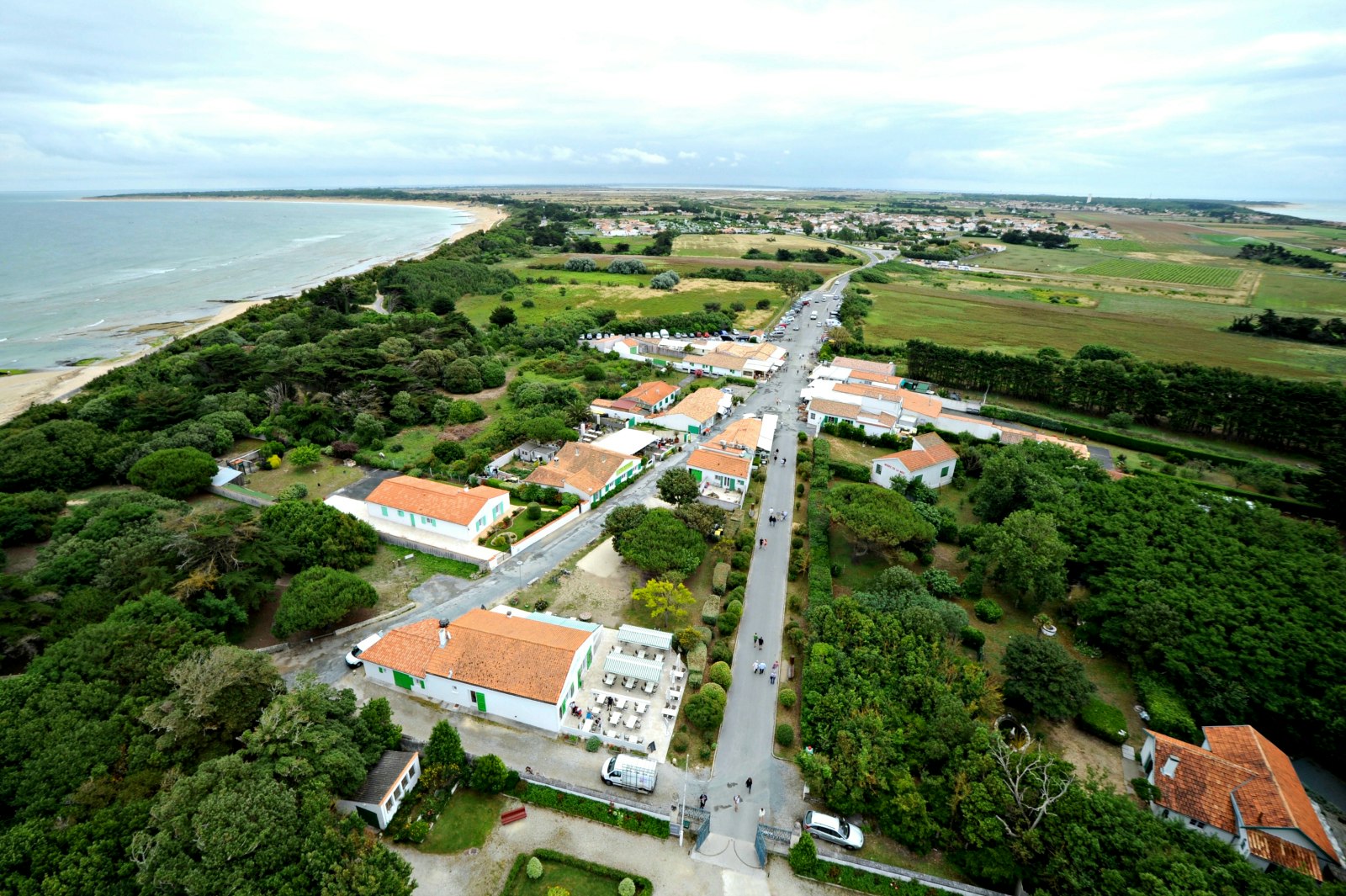
Ile de Ré's highest point
At Ile de Ré’s westernmost tip, the 59m-high Phare des Baleines lighthouse has been safely guiding ships around the island edge since it was built in 1854. Once you’ve wound your way up the 257 spiral steps – and it is a bit of a slog – your reward will be views that stretch right back to mainland France.
At its foot is the Musée des Baleines, which delves into the history of the lighthouse, and the Vieille Tour, a former lighthouse built in the 17th century that open to visitors during the summer.
This article was originally published August 2017 and last updated June 2021.
This article was first published Sep 2, 2019 and updated Jul 13, 2021.
Explore related stories
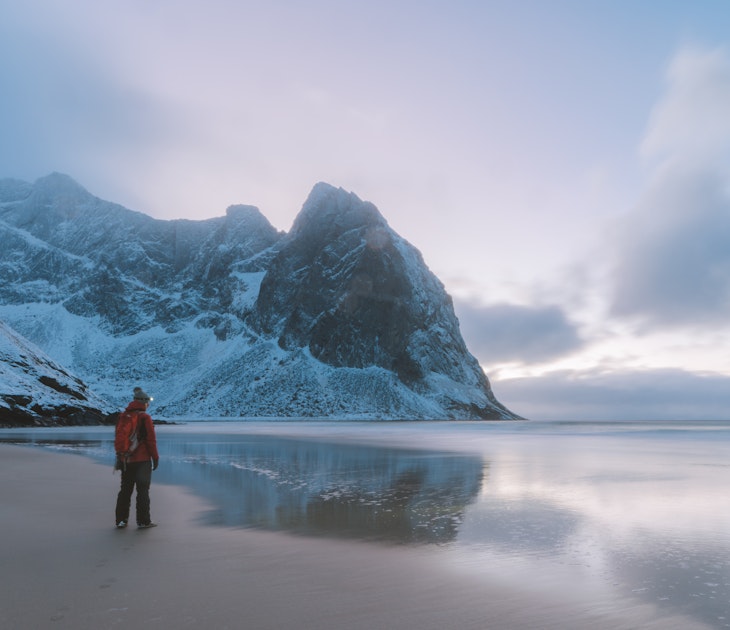
Nov 22, 2023 • 7 min read
You don't need sunshine to visit the beach. These cold weather stretches of sand are just as majestic.

Sep 2, 2022 • 10 min read
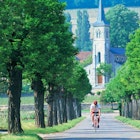
Aug 5, 2022 • 8 min read
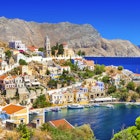
Aug 25, 2020 • 8 min read
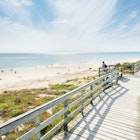
Feb 29, 2016 • 11 min read

Feb 15, 2024 • 16 min read
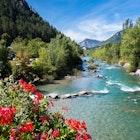

It doesn’t get much cozier than Ile de Re. This charming island on the French West Coast is located near the lively port city of La Rochelle and is known for its absurdly beautiful villages, white houses, stunning beaches, sparkling salt marshes, and relaxed French atmosphere. It’s no wonder that this island is part of UNESCO heritage. Everything here revolves around ecotourism and the preservation of the absurdly beautiful and pristine beauty of this island.
With an area of only 85 square kilometers, the island is not very large, so you can explore it perfectly in just a few days. If you’re looking for the ultimate Burgundian island life, Ile de Ré is the place to be!
- Where to eat
- Travel time
- Practical information
- The nicest accommodations
- How to get there
Our verdict

What to do in Il de Re
Ile de Ré may not be very big, but there is more than enough to see and do.
Rent a bike
Île de Ré is known for its charming villages with countless narrow streets and white houses. It’s already quite a task to drive through with a car, let alone with an old 1984 Mercedes camper ;p. That’s why it’s best to explore the island by bike. The island is mostly flat and you’ll find well-maintained bike paths everywhere. Don’t have a bike with you? No worries. On every street corner, you can rent a bike for about 10 euros per day.

Visit Saint-Martin-de-Ré
Once you’ve got a bike, we definitely recommend visiting the town of Saint-Martin-de-Ré. It’s the perfect place to start and end your day. You’ll find numerous restaurants and nice shops. Tip! On weekends, you’ll find a cozy market here.

Visit La Flotte
Less than a 15-minute bike ride from Saint-Martin-de-Ré, you’ll find the next gem of Ile de Ré. The town of La Flotte may be a bit smaller but takes the top prize for the coziest harbor town on the island. Take a seat by the harbor and enjoy the pleasant atmosphere and amazing view.

Sainte-Marie-de-Ré
We stayed in the small yet oh-so-adorable Sainte-Marie-de-Ré. The village is small, but it has everything. Stroll through the narrow alleys and enjoy a drink on the square. If you’re looking for tranquility and coziness, this is the place to be. The old church towers over everything and is definitely worth a visit.

If you’re lucky, it’s possible to surf on Ile de Ré. The island has a favorable location, which means the best surfing can be found on the south coast. The best surf spots can be found at:
- Les Grenettes
- Diamond Head
- La Petit Bec
Visit the salt marshes
If you buy salt in France, chances are it comes from Ile de Ré. A large part of the island consists of salt marshes. Salt has been harvested here since the Middle Ages.
Relax on the beach
After a day of cycling or walking through the salt marshes, there’s no better place to unwind than on the beach. If you visit Ile de Ré in the low season, you might even have the beach all to yourself at times. Tip! Bring a blanket, some French wine, and have a lovely sunset beach picnic.
- Mon Mochi for the tastiest pastries
- VINTAGE COFFEE, although I found the coffee really bad, the burgers were delicious
- L’Ecailler in La Flotte
- O Parloir, a delightful garden to sit in
- Ben-Hur Char a Huitres, cozy food truck
- A Côté de Chez Fred
- Côté Jardin
- La Cabine de Bain

Best time to travel to Il de Ré
The best time to visit the island of Ile de Ré is from May to September. During this period, the temperatures are often delightful, and the chance of rain is the smallest. In the high season, it can be quite busy, as Ile de Ré is a popular holiday destination for the French.

Which budget do i need in Il de Ré?
Unfortunately, France is not a super budget-friendly destination, but you can make your stay at Ile de Ré as expensive or affordable as you want, of course. Here’s a small cost indication for Ile de Ré.
- Camping: 20 euros per night
- Parking fees: 0 – 10 euros per night
- Hotel: 60 – 100 euros per night
- Bike rental: 10 – 15 euros per day
- Dining out: 30 – 75 euros per day
- Toll road: 8 – 15 euros (depending on the type of transport)

Budget Tips for Ile de Ré, France
- Accommodation: Opt for campsites, hostels, or Airbnb rentals instead of hotels. Booking well in advance or traveling during the shoulder season can also help you find better deals.
- Transportation: Rent a bike to explore the island, as it’s cheaper than renting a car or relying on taxis. Plus, cycling is an excellent way to experience the beautiful scenery of Ile de Ré.
- Food: Visit local markets and shops to buy fresh produce and ingredients for preparing your own meals. This can save you money compared to eating out at restaurants. Alternatively, look for inexpensive cafes and takeaway options.
- Free activities: Enjoy the many free activities Ile de Ré has to offer, such as relaxing on the beach, hiking, or biking through the salt marshes. You can also stroll through picturesque villages and explore their charming streets.
- Sightseeing: Take advantage of free or low-cost attractions, such as visiting the local lighthouses, churches, and historical sites. Research any free-entry days for museums or other attractions.
- Picnics: Instead of dining out for every meal, pack a picnic with local cheeses, bread, fruits, and a bottle of French wine. Enjoy your meal on the beach or in one of the island’s parks.
- Travel during the off-season: Visiting Ile de Ré in the shoulder season (spring or fall) can help you save money on accommodations, transportation, and activities, as prices tend to be lower than during the high season.
Remember, a little planning and research can go a long way in helping you make the most of your budget while enjoying all that Ile de Ré has to offer.
Practical information about Il de Ré
- To cross Ile de Ré, you need to go over a toll bridge. This costs around 8 – 15 euros, depending on the type of vehicle. You can pay with a credit card.
- If you want to go surfing, it’s cheaper to buy a surfboard and wetsuit in advance. A beginner’s board doesn’t have to be expensive. Tip! Buy your board second-hand through an online marketplace or check out Decathlon.
- Use the Campercontact or Park4night app to find the best camper sites and campgrounds.
- It’s cheaper to refuel in villages, so never fill up your tank on the highway.
- If you need to withdraw cash in Europe, you often have to pay a small fee to your bank. We recently switched to Knab, which doesn’t charge any extra fees.
- Explore the island by bike: Ile de Ré is known for its extensive network of cycling paths. Rent a bike and enjoy the scenic routes while discovering charming villages, picturesque harbors, and beautiful beaches.
- Respect the environment: Ile de Ré is home to diverse flora and fauna. To help preserve this unique ecosystem, be mindful of your environmental impact during your visit by following local guidelines, minimizing waste, and respecting protected areas.
What are nice places to stay in Il de Ré?
The best campsites on ile de re.
We spent a few days at Huttopia by the sea. A bit basic but by the sea, so always enjoyable. Book here HUTTOPIA CÔTE SAUVAGE – ILE DE RÉ >>
The Best Wild Camping Spots on Ile de Re
- https://park4night.com/nl/lieu/23116/open/
- https://park4night.com/nl/lieu/249679/open/
The Best Hotels on Ile de Re
Autour d’une histoire 2.

Hôtel Le Galion

La Maison Douce

How to get to Il de Ré?
without toll roads. With an old camper, you can easily add a few more hours to the journey ;p
It is also possible to take the train to Paris and then continue the route to La Rochelle. From Paris, it is only a 3-hour drive.

Send us some love through the digital mailbox
Totally thrilled with this article and want to send We Wander Why some love? You can! Leave a comment below the article, follow We Wander Why on Instagram , tag us when you use a tip from the article, or pin this article to save for later. Or go completely nuts and do all three. That makes us very happy.
Pin & save for later
Travel further to
Leave a reply cancel reply.
Your email address will not be published. Required fields are marked *
Save my name, email, and website in this browser for the next time I comment.
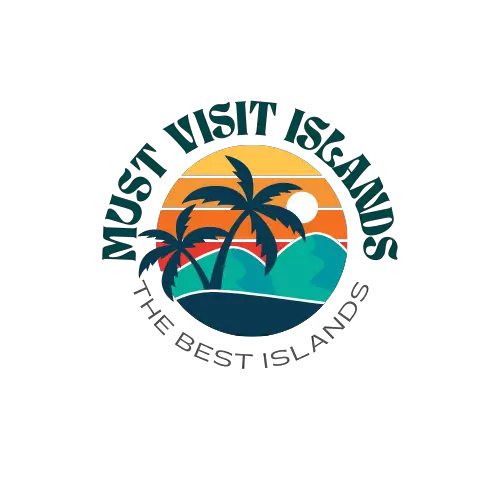
Ile de Re: An In-Depth Guide
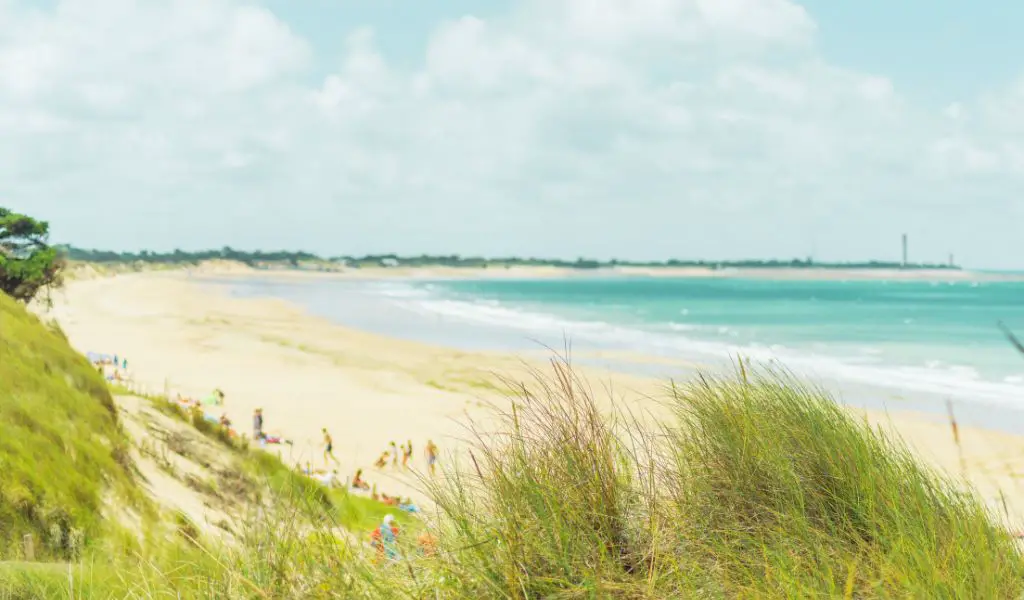
As an affiliate, we may earn a commission from qualifying purchases. We get commissions for purchases made through links on this website from Amazon and other third parties.
Located off the western coast of France in the Atlantic Ocean, Ile de Re is a picturesque island that beautifully encapsulates the charm of coastal French life. Also known as the “White Island,” it spans a distance of about 30 kilometers from end to end and is characterized by its low-lying topography, shaped by the ebb and flow of the ocean over the years. The island’s landscape is predominantly flat, interrupted occasionally by sand dunes, vineyards, and small forests that contribute to its diverse ecological array.
Table of Contents
The historical heritage of Ile de Re is as captivating as its natural beauty.
Dating back to the Roman times, the island has seen various significant events.
Its history is remarkably preserved in its architecture, notably seen in the Saint-Martin-de-Re, a fortified village designed by Vauban, a 17th-century French military engineer.
This structure, along with 11 other Vauban sites, is inscribed on the UNESCO World Heritage List, speaking volumes about its historical significance.
Apart from this, the island is dotted with charming lighthouses and ancient abbeys, each narrating a tale from the past.
The Phare des Baleines, one of the tallest lighthouses in France, is a testament to the island’s maritime history, while the Abbaye des Chateliers is a picturesque ruin reminiscent of the grandeur of the Cistercian order.
Ile de Re is also a paradise for outdoor enthusiasts.
Cycling is particularly popular, with more than 100 kilometers of dedicated cycle paths that traverse the island, taking visitors through salt marshes , quaint villages, and scenic coastlines.
The island’s calm, shallow waters make it an ideal location for sailing and windsurfing, while its abundant birdlife attracts bird watchers from around the world.
Ile de Re is home to around 18,000 permanent residents.
However, during the peak summer months, the population swells significantly as holidaymakers flock to the island to enjoy its pleasant weather and tranquil beaches.
The best time to visit Ile de Re is from late spring (May) to early autumn (September) when the weather is warm and sunny.
However, the island is enchanting throughout the year, offering peaceful winters and colorful autumns.
How to Get There
The island is accessible by a toll bridge from La Rochelle, a city on the mainland.
There are also regular bus services from La Rochelle and its airport to the island.
Key highlights include the historic Saint-Martin-de-Re, the iconic Phare des Baleines lighthouse, and the natural beauty of the island’s beaches and forests.
Cycling through the island’s intricate network of trails is also a must-do activity .
What You Should Know
Remember to pack comfortable shoes for cycling and walking.
Though French is the official language, English is commonly understood in most tourist areas. The island’s currency is the Euro.
Frequently Asked Questions
Can i rent bicycles on the island.
Yes, there are several bicycle rental shops on the island.
Is there accommodation available on the island?
Yes, the island has a range of accommodations, from luxury hotels to charming bed and breakfasts.
Are there restaurants on the island?
Yes, you will find plenty of eateries offering a variety of cuisines, including fresh seafood and local specialties.
About the author
Latest Posts
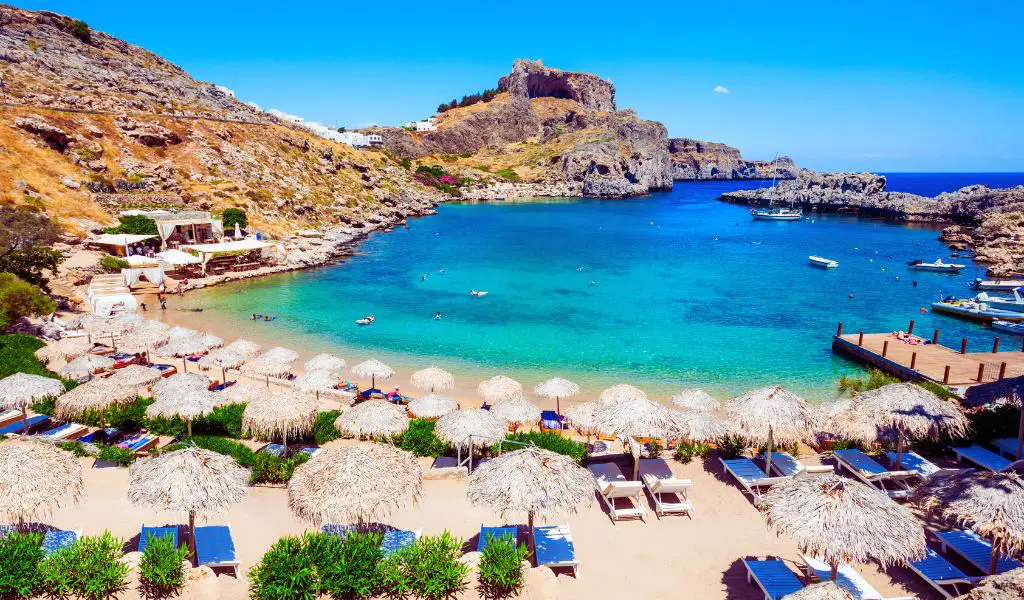
The Ultimate Family Vacation: Discovering the Best Greek Islands for Families
Discover the ultimate family vacation on the Greek islands with our comprehensive guide. Explore Crete, Rhodes, Corfu, Naxos, and Paros, where stunning landscapes, rich history, and warm local hospitality await. Find the best activities, accommodations, dining, and practical tips for a memorable family adventure.
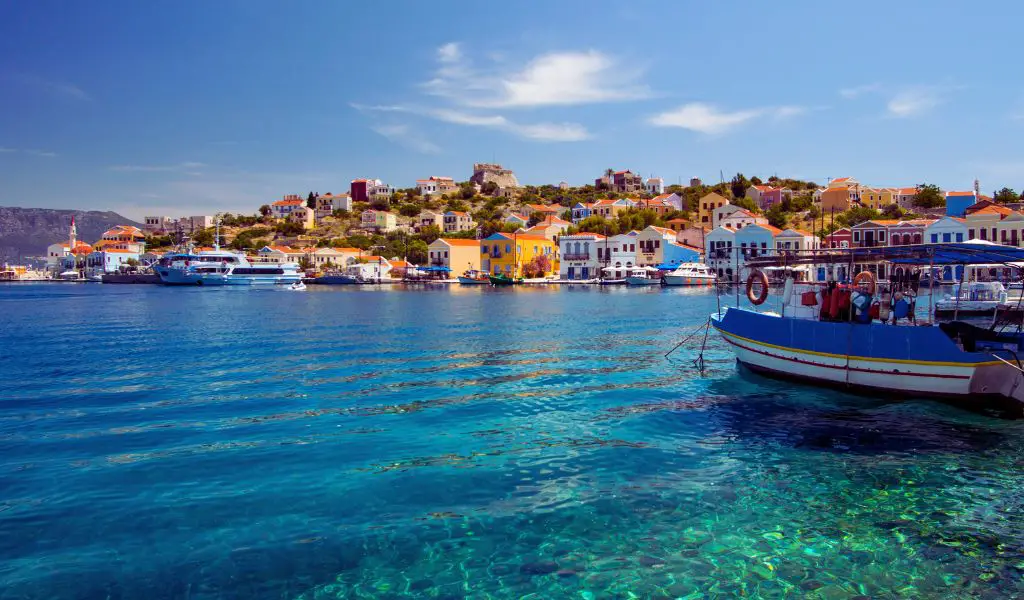
Discovering the Most Unspoilt Greek Island: A Journey to Ikaria
Uncover the secrets of Ikaria, the most unspoilt Greek island, where untouched natural beauty meets rich cultural traditions. Explore what makes this hidden gem a paradise for those seeking serenity and authenticity.
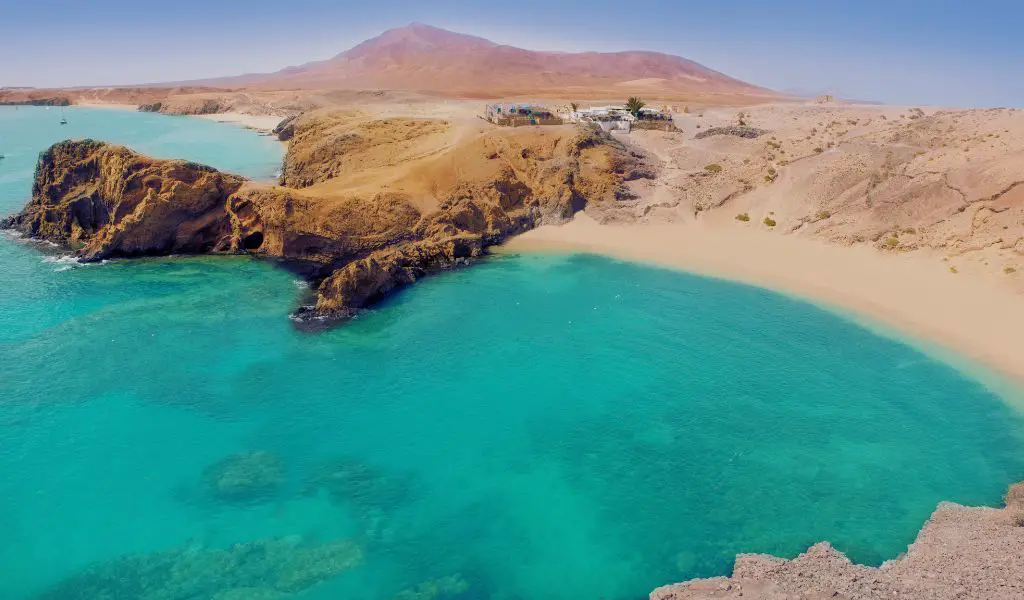
Exploring Lanzarote: A Comprehensive Guide to the Canary Island Gem
Explore the fascinating island of Lanzarote in the Canary Islands. Learn about its unique volcanic landscapes, cultural heritage, and popular activities. Get practical information on the best time to visit, how to get there, and what you should know before you go.


A Guide to the Best Things to do in Île de Ré
By: Author Sophie Nadeau
Posted on Last updated: 25th January 2024
Categories France
Last Updated on 25th January 2024 by Sophie Nadeau
A windswept island just off the French Atlantic Coast, Île de Ré is one of the most charming spots to visit in France, and not just because of the stunning scenery! Boasting one of the biggest salt producing areas in France, as well as kilometre upon kilometre of untamed wilderness, the island is the perfect escape from the hustle and bustle of modern day life.

Île de Ré is situated around a half hour drive from La Rochelle and is home to several pretty as a postcard villages (so picturesque that they have been deemed to be among the most beautiful villages in France) and is commonly referred to simply as Ré island in English.
Many people opt to go camping on the island to get in touch with nature and get away from it all. With this being said, most of the island’s main attractions can easily be seen over the course of a day if that’s all the time you have to explore. Here’s your guide to the best things to do in Île de Ré .

Where is Île de Ré?
What is île de ré known for, when is the best time to visit, getting around île de ré, phare des baleines, saint martin de re, abbaye des chateliers, beaches on ile de re, marais salants (salt marshes), oyster farming, suggested itinerary for one day in île de ré, where to stay in île de ré, watch the ile de re travel video.
Île de Ré is located just off of mainland France in the Atlantic Sea and is just 19 miles long (but plenty is packed into this thin strip of land). The island is commonly referred to as being in southwest France, though geographically speaking its more of central western France.
The island is nestled within the Bay of Biscay in the Charente-Maritime département and has been inhabited since at least Roman times. Many people now refer to the island as the French version of the Hamptons due to its popularity among Parisians.

The island is particularly famed for its oysters, and all around the island there are oyster shacks selling freshly farmed seafood to any willing buyers. The island is also known for its salt production, and there are a number of salt flats in the western portion of the island.

Like many destinations in France, the best time to visit Île de Ré is in the summer when the temperatures are higher, the days are longer, and there’s little chance of rain. Many businesses on the island are seasonal, and so if you visit in the winter you’ll find many shops shut.
However, as you can imagine with a place popular among Parisians, visiting in the summer comes with elevated prices, not to mention that the best accommodation and camping grounds fill up fast- so be sure to reserve everything you need for your trip well in advance.

Once on the island, you’ll soon discover the most popular way of getting around the place: by bicycle. Bike rental locations are all over the island, though every big town and village also has one.
Wherever you go, you’ll find dozens upon dozens of bikes parked up, and if you’re driving around the island, you’ll soon realise who gets the real priority on the roads (it’s the bicycles!) Since we were only on the island for a day, we opted to get around by car, but I would love to return for a longer time and get around by bicycle.
If you’re visiting Île de Ré by car, then one of the more unique architectural marvels you’ll come across on the island is the Pont de l’île de Ré, which was completed in 1988. You have to pay a toll of €8 to cross the bridge (depending on your vehicle) but you can pay by card.
Things to do in Île de Ré
The lighthouse (literally translated to ‘whale lighthouse’ in English) lies at the furthest extremity of the island to the mainland and I recommend making it your first port of call if you’re only on Île de Ré for a day since then you can work your way back to the mainland.
The structure you see today was constructed in 1854 to replace a former Vauban building on the site from the 17th-century. Now, for a fee, you can climb the 250+ steps to reach the top of the lighthouse and enjoy a bird’s eye view of the island. There’s also an accompanying museum.

Nearby, there are a number of coastal walks where you can enjoy uninterrupted views of the Atlantic Ocean. There are also a number of tourist shops close to the lighthouse (between the parking of the lighthouse and the lighthouse itself) selling all sorts of typical beachwares.
As well as stores selling your usual coverups and beach dresses, there’s a shop selling beach bags with typical French names (Sophie, Charlotte, Marie) embroidered on the side. This is also a great spot to enjoy an ice cream.
We personally went to La Martinière and you can get strange flavours like local oyster! If you prefer something more traditional, then you need to look no further than the salted caramel, which contains locally farmed salt. Another island speciality worth sampling is the frozen macaron- it was truly delicious!

The capital of the island is an impressive walled town which was fortified in the 17th-century by Vauban. Home to a population of just over 2000 residents, the real draw of this seaside town is the chance to stroll along the 1681 to 1691 built fortifications.
There are also several other architectural treasures to be enjoyed in town. This includes ascneding the 100+ steps of the bell tower of Eglise Saint Martin and visiting the Ernest Cognacq Museum.
There are actually two “plus beau villages de France” on the island, with Ars-en-Re being one of them. Truth be told, there’s not a huge amount of activities in the village and the main point of interest is to wander around, snapping photos of the pretty houses and little streets.
The main point of interest in Ars-en-Re is its centrally located parish church. Though the interior is quite plain when it comes to Roman Catholic churches, the steeple is particularly interesting in that it has been painted black and white so as to help ships with navigation.

The other village which has been awarded the esteemed “most beautiful villages in France” is La Flotte, a picturesque village which is home to just under 3000 permanent residents.
One of the highlights of a visit to the village comes in the form of a market, which takes place daily in Market Square in July and August.
Situated just a stone’s throw away from La Flotte (one of the most beautiful villages in France), the crumbling ruins of the Abbey of Chateliers are free to visit and are open 24/7.
There is parking just off the main road, though visitors should note that there’s not a great deal of space to park and the car park fills up fast, especially during peak season. I therefore recommend going first thing in the morning so as to see the ecclesiastical building with fewer people around and actually secure a spot!
The Abbey itself was founded during the Middle Ages, when Cistercian monks left the mainland to set up a wine and salt trade on the island. The Brothers eventually left the island as they were tired of constant pillaging and attacks.
Now, the 12th-century complex remains the oldest building on the island. Visitors can visit the former abbey and accompanying cloisters. In the late spring, poppies bloom in the field surrounding the abbey, adding to the overall ambiance.

Of course, there’s no way you would want to visit an island in western France without heading to the beach at some point or another. Ile de Re boasts several sandy stretches, though the most popular include:
- Plage de Gros Jonc : this beach is used by surfers but also by sunbathers owing to its nice sand.
- Plage de Trousse Chemise : this is a wild beach near Les-Portes-en-Ré which is known for its wind (making it popular among kitesurfers)
- Plage du Petit Sergent : this is a pebble beach not far from Le Bois Plage. Several hiking routes can be found close by.
- Plage du Peu Ragot: this is one of the most popular beaches on the island for families owing to the number of nearby facilities. There are toilets and lifeguards on site (though check that the lifeguard is actually on duty on the day you visit).
- Plage de la Cible : this beach is one of the closest to Saint-Martin-de-Ré.

As I mentioned previously, Île de Ré is quite famous for its salt production, which has taken place on the island since the Middle Ages (even the monks dabbled in salt selling at this time!)
Though at one point in the past few centuries salt farming (a salt farmer is called ‘saunier’ in French) became a bit of a lost art, the job has enjoyed somewhat of a resurgence in the past few decades and so you can still see the traditional salt farming on the salt flats today.
There’s even a small museum, Ecomuseum Marais Salant, where you can learn more about the history of salt farming on the island. The museum is set among the salt flats, meaning that you can drive or cycle there and see plenty of salt production en route.

The other key food industry that takes place on the island is oyster farming. Oyster beds are scattered across the island and many of these oyster farmers have small shacks close to their farms where you can sit and enjoy local seafood paired with a local wine and fantastic sea views.
We personally went to Les Copains Babord, where one of my friends enjoyed the house speciality: a plate of oysters served up with a fresh slice of lemon. Another of our friends had their fruit salad, while I had just had a massive ice cream so just enjoyed their local glass of rosé, which is produced on the island.

In order to enjoy this itinerary, you’ll need access to your own vehicle, which you can rent on the mainland. Check car rental comparison prices here in advance.
Phare des Baleienes: start your day off at the furthest point from the mainland. Go up the lighthouse, enjoy views of the island, and if you enjoy sweets in the morning, sample a frozen macaron at La Martinière.
Ars-en-Ré: wander around one of the most beautiful villages in France. Snap photos of the pastel hued houses and adorable shutters and doors and stroll inside the historic church in the village centre.
Marais Salants: you can’t visit Île de Ré without at least looking at some of the salt flats. Those who are extra curious can even opt to visit the eco-museum in the heart of the salt flatlands.
Grab lunch: I personally recommend going to an oyster shack and sampling some of the local seafood while overlooking the sea. They are scattered all over the island so look on Google maps and head to the one which looks best for you! Many also offer non-seafood options.
Saint Martin de Ré: be impressed by some well-preserved Vuaban fortifications. If you’re not too tired, climb the Eglise Saint Martin bell tower to enjoy views of the town, port, and beyond.
Abbey of Chateliers: Enjoy well-preserved abbey ruins in a moment of calm. You don’t need a huge amount of time to visit the former ecclesiastical complex and so I recommend setting aside just half an hour or so.
La Flotte: Finish your time in Île de Ré with one of the most beautiful villages in France. The village is particularly famed for its pretty port, where you can grab a drink or ice cream as the sun goes down.
Thanks to its windswept location alongside the Atlantic, Île de Ré is a pretty magical destination in which to spend a weekend. If you want to
Hôtel de La Marée – Ile de Ré
Enjoyed reading this complete guide to Île de Ré? Pin this article now, read it again later:

Sophie Nadeau loves dogs, books, travel, pizza, and history. A Francophile at heart, she runs solosophie.com when she’s not chasing after the next sunset shot or consuming something sweet. She splits her time between Paris and London and travels as much as she can! Subscribe to Sophie’s YouTube Channel.
This site uses Akismet to reduce spam. Learn how your comment data is processed .

- Hébergements
- Activités/Expériences
Recherchez votre location
L'inspiration du moment.

Le temps d’un week-end sur l'île de Ré
Que faire le temps d’un week-end sur l’île de ré .

Une île savoureuse
Des produits du terroir à déguster à toutes les saisons.

Goûter aux plaisirs de la randonnée pédestre
Découvrez l'île de ré.

Éveillez vos sens

Horaires de bus, navettes village, transport à la demande

Rouler tout doux, rouler sécur’- Infos

Office de tourisme et bureaux d'accueil

Séjours bas-carbone
Sur l'île de ré, il fait bon vivre tout au long de l'année.

La boutique Destination Ile de Ré !
Des souvenirs de l'ile de ré dans nos boutiques .

Réservez vos expériences et activités sur l'Ile de Ré !


- What to see on the Ile de Ré ? Our must-sees !
- Land activities
Our list of things to see on the Ile de Ré !
The island of Ré is full of varied landscapes and breathtaking panoramas. From fine sandy beaches to salt marshes, dunes and wooded areas, the island has an exceptional nature, which can be appreciated from all angles. It is also possible to see on the Ile de Ré a preserved architectural heritage, a legacy of the island's century-old history.
7 places not to be missed on the Ile de Ré !
1. the bridge of ile de ré.

By crossing it, you will have an outstanding view of the northern side of the island. Almost 3km long, it is an integral part of the landscape of the island. Below, on the beach of Rivedoux, you will feel very small in front of this concrete giant. From afar, its curved shape will charm you, especially at sunset or when its 220 lights start to sparkle at nightfall.
2. The salt marshes and the national natural reserve of Lilleau des Niges

An ancestral know-how of the island, salt culture and its marshes shape the landscapes of the villages surrounding the Fier d'Ars, in the west of the island. It is in this area, more precisely in Les Portes-en-Ré, that the national natural reserve of Lilleau des Niges is located. Managed by the LPO (League for the Protection of Birds), it is a land of welcome for thousands of migratory birds, in spring as in autumn.
It is also a place where many species live all year round. The museum of the Maison du Fier will show you the mechanisms of this preserved ecosystem. Escape in a labyrinth of paths accessible all year long, and meet a remarkable biodiversity!
3. The Saint-Martin church and its observatory bell tower in Saint-Martin-de-Ré

The 14th century church has been rebuilt several times. At the top of the 117 steps, you will be rewarded for your effort with a view of the harbor of Saint-Martin-de-Ré, its fortifications, and the surrounding villages. In the middle of the day or at sunset, you will have access to an exceptional panorama!
4. The fortifications and the park of the "donkeys in pants" in Saint-Martin-de-Ré

At the Barbette Park in Saint-Martin-de-Ré, little ones will be able to ride on the backs of breeder Régis Léau's Baudets du Poitou, a protected species that has become true mascots of the Ile de Ré over the years. Built under the reign of Louis XIV from 1681 to 1691 by the famous military engineer Vauban, the fortifications of Saint-Martin-de-Ré are unique in their dimensions: 14 km of ramparts on a half-circle of 1.5 km!
Explore them on your own or take a guided tour of the fortifications, one of the many tours proposed by Destination Ile de Ré! Discover all these visits as well as those of our partners!
5. The bell tower of Ars-en-Ré

Built in the 15th century and recognizable by its black and white bell tower, this emblematic monument of the Ile de Ré serves as a bitter for sailors sailing in the channels.
Climb the steps to the top and you will be rewarded with a breathtaking view of the Fier d'Ars and its marshes, as well as the reserve of Lilleau des Niges!
6. The Fort La Prée in La Flotte

Built in 1625 by the engineers Le Camus and d'Argencourt under the reign of Louis XIII, with a view to reconquering the Protestant places, the Fort La Prée was remodeled at the end of the 17th century by the engineer Vauban before playing, in the following century, the role of a secondary fortress for the benefit of the citadel of Saint-Martin-de-Ré
7. The Whale Lighthouse in Saint-Clément-des-Baleines

Culminating at 57 meters, the Whale Lighthouse offers a breathtaking panorama on the Ile de Ré and the inlets. Built in 1849 to reinforce the action of the old tower built under Vauban and classified as a historical monument, it was inaugurated in 1854.
At the bottom of the old tower, the Whale Museum reveals the fascinating history of lighthouses and their construction methods. An educational exhibition made of multimedia sequences, panels and objects that will enlighten young and old alike!
Which species can be seen on the Ile de Ré ?
The Ile de Ré is a preserved territory, partly thanks to the financing obtained by the ecotax of the bridge. It is part of the Parc Naturel Marin de l'Estuaire de la Gironde et de la Mer des Pertuis, and recognized associations such as ADEPIR, the LPO, Ré Nature Environnement, or the Tardigrades who work to protect its biodiversity.

So, before walking in the marshes or in the National Reserve Lilleau des Niges, go to the Maison du Fier in Ars-en-Ré. It will show you the flora and the birds, migratory or sedentary, that you might encounter! The Maison de la Dune in Les Portes-en-Ré will tell you more about the importance of the dunes and wooded areas in the ecosystem of the Ile de Ré. You can also visit the A.N.C.R.E maritaise in Sainte-Marie-de-Ré to learn more about shellfish and how to preserve the environment during your future fishing trips! You can also participate in nature outings accompanied by a guide to learn more about the nature of the island! The Ile de Ré is also an important territory for the aquarium of La Rochelle. For example, it is on a beach in Ré that 6 turtles cared at the aquarium were released in 2018!
Where to see the most beautiful beaches of the Ile de Ré ?
Given the insularity and the size of the Ile de Ré, you will never be far from the beach! Whether you want to lounge, stroll or play your favorite sports, it will be difficult to choose!
- North Beach - Rivedoux-Plage This is the first beach you will see when you arrive on the island! From your towel, you will be able to observe the bridge, the harbor of Rivedoux-Plage, and even the Abbaye des Châteliers if the horizon is clear. It is also a paradise for the lovers of gliding sports since a zone is reserved for them.
- South Beach - Rivedoux-Plage There are many games for children and a beach club. Many water activities are also available, and this beach is accessible to people with reduced mobility.
- Grouin Beach - Loix At the very end of the Loix peninsula, the Grouin beach, in the shape of a cove, is dominated by its small fort. You will be able to observe the lighthouse of Saint-Martin-de-Ré in the distance!
- Peu Ragot beach - La Couarde-sur-Mer Its fine white sand will delight you! There is a beach club for children and a nautical center! This beach is accessible to people with reduced mobility.

- Beach of Arnérault - La Flotte The Plage de l'Arnérault, the only beach in La Flotte, is located a few steps from the harbor and the heart of the village. The cove of Arnérault offers a sheltered bay, ideal for swimming in complete safety. This beach is accessible to people with reduced mobility.
- La Cible Beach - Saint-Martin-de-Ré This intimate beach is located only 700 meters from the harbor. Its white bathing cabins give it a unique charm!
- Trousse Chemise beach - Les Portes-en-Ré Sung by Charles Aznavour, this authentic and wild beach offers activities for the whole family. With a little luck, the sea will be low enough for you to walk on the woodcutters' bench!
- Plage des Gollandières - Le Bois-Plage-en-Ré It will be easy for you to put your towel down there since it extends over several kilometers! The jetty which overhangs it is an emblematic place of the island and offers you a panoramic view from Rivedoux-Plage to Ars-en-Ré !
See the Ile de Ré differently !
Get some height.
If the Ile de Ré is quite flat, it is not impossible to get some height by climbing a few steps (or a lot of them, it's a question of point of view ;)) ! So, climb to the top of the Phare des Baleines, or the bell towers of Ars-en-Ré or Saint-Martin-de-Ré, and admire from above the white houses with orange roofs, the vineyards, the forests and the ocean as far as the eye can see! If you prefer to take off with your feet off the ground without any effort, you can also take a ride in a microlight! Sensations guaranteed!

Sail on the island or offshore!
Go for a ride on the water through the marshes in a canoe or paddle, or jump on a sail boat, a catamaran or a fishing boat and observe the coastline from your boat!

Surfing, windsurfing, jet skiing ... the Ile de Ré, a paradise for water sports!

What to see on the Ile de Ré ? Our must-sees! With its kilometers of beach and the waves of the Atlantic Ocean, the Ile de Ré is the ideal place to learn or improve in a water sport! The weather conditions, the plethora of courses, lessons, or equipment rental, […]
Getaway in the sea with a paddle on the Ile de Ré

Ready to grab your paddle and head for the turquoise waters of the Ile de Ré? Enjoy an afternoon with friends to learn stand up paddling on the Ile de Ré, the ancestor of surfing.The famous American surfer and Hawaiian legend Lair Hamilton brought it to light when he crossed […]
Plan Your Ile de Re Holiday: Best of Ile de Re

EXPLORE Ile de Re
Essential ile de re.
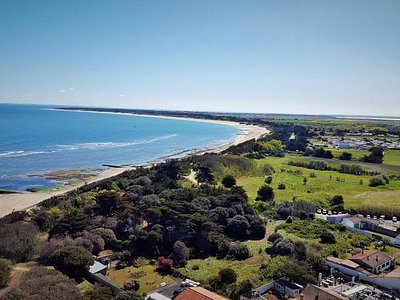
Trending in the forums
Ile de Re Is Great For

The great outdoors

Eat & drink

- Accomodations
- Activities/Experiences
Recherchez votre location
Inspiration of the moment.

Le temps d’un week-end sur l'île de Ré
Que faire le temps d’un week-end sur l’île de ré .

Une île savoureuse
Des produits du terroir à déguster à toutes les saisons.

Goûter aux plaisirs de la randonnée pédestre
Discover île de ré.

Awakening of the senses

Family holidays

Preserved and living nature

Nautical activities

Region of Art and History
Ile de ré, where it's good to live all along the year .

Your stay and holidays in Ile de Ré

Travel Guide to Ile de Re
Best things to do and see in ile de re.
- Places to stay
- Insider's Guide
- Travel Info
Ile de Re: Why go
Joined by a vast bridge to the mainland, the Ile de Ré is only a hop, skip and a jump from La Rochelle, but it feels a million miles away from bustling city life. This is one of the favourite holiday retreats for wealthy Parisians who want to escape to the beach en famille or à deux, for anything from a weekend to a fortnight. And little wonder. There's exquisite seafood, stunning beaches, gorgeous stone cottages, isolated salt marshes and dunes for bird watching - and, throughout it all, that handsome, laid-back charm that the French do so well. The island is a hub for oyster and salt production and is also famous for its wines and tasty potatoes. A local government order banning all development over two storeys and insisting on all new builds being in the same style as the remainder of the island means it still feels quaint and unspoilt. Houses are white, with shutters of duck egg blue or sea green. But the real joy of Ré is the fact that it is laced with over 100km of well-signed cycle paths, and with the highest point of the island being only 19m above sea level, it is perfect for easy-going bike rides from beach to beach, or to the colourful local markets that run throughout the summer. French celebrities love the gentle pace of life, and many have been spotted in its clutch of unexpectedly boutique hotels. There are 10 villages on the island, each with its own unique character. The capital, Saint Martin, is a small port with oodles of glamorous boutiques and antique shops hidden in its tiny lanes, alongside fabulous restaurants and bistros. La Flotte is well known for its vibrant outdoor market; sleepy Ars-en-Ré for its black steeple standing out against the perfect blue sky. You could visit most of the villages in a couple of days, or take a day to explore each one if you have the time and energy. The beaches are also stunning, the longest of them stretching for 3km. The Retais (islanders) claim that Ré has as many days of sunshine as the Cote d'Azur - and if you don't need jet-skis and jewels, this would make a lovely alternative to the more famous south coast. The Ile de Ré has a population of around 18,000 people. However, during the months of July and August this swells to a staggering 400,000. The island is barely large enough to survive this onslaught of holidaymakers (largely French) and if you do go at this time, you should make hotel and restaurant reservations months in advance - and be prepared to sit cheek by jowl with hundreds of other families on the beach. May, June and September are far less crowded - a perfect time to visit, if you can.
- Family holidays

- Dreaming of Sunset with Oliver’s Travels
- Best Cities in Europe for Remote Working
- 10 Wow-Factor Homes For Your 2024 Reunion Holiday
- Our Top Tour De France Luxury Villas 2023
- The Most Popular Travel-Inspired Interior Trends
- The Best Places to Take a Workation – UK and Abroad
- Oliver’s Vampire Weekender – Only the Undead Should Apply!
- www.oliverstravels.com
- Smart Travel
- Places To Stay
- Travel Guides
Destination Guide to Île de Ré, France
Just 19 miles by five, the tiny Île de Ré punches well above its weight. The pace slips down a few gears on this seahorse-shaped island, cast adrift from La Rochelle. A web of hollyhock-lined cycling trails connects pretty harbour villages, scattered between pine forests and vineyards, while oyster shacks sit on the fringes of shimmering salt pans. Here’s our guide to the best holidays in Île de Ré, France.
Avoid July and August when Isle de Ré is flooded with holidaying Parisians; instead, opt for spring or early autumn so it’s pleasant enough to hike, cycle and horse ride – without the crowds.
How to get to Île de Ré, France
Ryanair, Jet2 and Flybe all fly to La Rochelle from UK airports. Alternatively, take the Eurostar to Paris, then the TGV to La Rochelle. From here, it’s a 30-minute car journey to Île de Ré via a toll bridge.
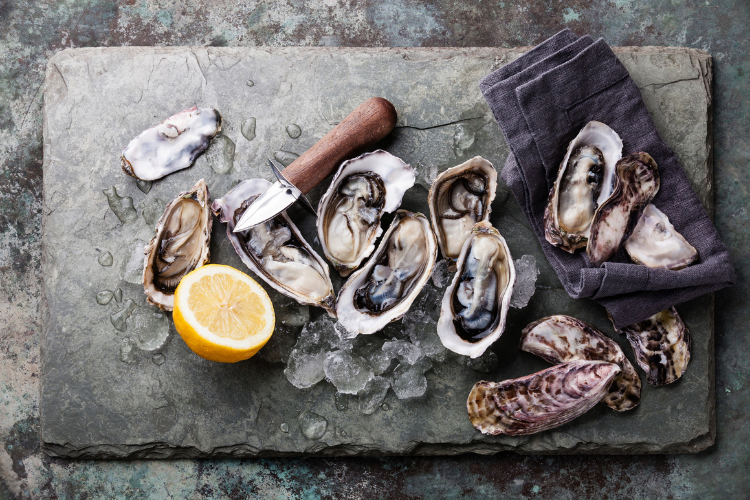
Expect seafood – and lots of it. Hotfoot it to the oyster cabanes dotting the western coast for tastings and takeaways; one of the best is L’Escale du Marais near Le Bois-Plage-en-Ré. Elsewhere, Saint-Martin-de-Ré is peppered with excellent restaurants (try locals’ favourite Le Bistrot du Marin or quayside La Baleine Bleue ), but be sure to swing by the indoor food market to sample fresh seafood, cheeses and meats – feast on the deep-fried salt cod balls. However, the top food market on Île de Ré has to be La Flotte’s, set beneath medieval porticoes; don’t miss the divine bakery stall. You can’t visit Isle de Ré without sampling its famed chocolates made from local salt; pick some up from Île de Ré Chocolats .
Île de Ré beaches are among the finest in France. Fine blonde sand cushions much of the coastline, although the southern swathes can become crowded in July and August. Venture west instead to escape the summer hordes and discover wilder, remoter stretches, including the dune-swept Plage de la Conche des Baleines and sheltered Plage du Trousse Chemise. Plage de Gros Jonc is one of the best beaches in Île de Ré for windsurfing, with equipment hire and lessons, while the salt marshland near Loix is great for kayaking.
Picturesque towns and villages
A necklace of harbour towns is strung across the island, from show-stopping capital Saint-Martin-de-Ré, with star-shaped fortifications under UNESCO protection, to La Flotte and its crescent of sand – dotted with cockle pickers at low tide. Further west, you’ll discover one of the prettiest towns in France: Ars-en-Ré. Head to the town’s sleepy square to gawp at its 16th-century church spire, painted black and white to act as a landmark for sailors. Island authorities ensure Île de Ré will never lose its charm: houses are limited in number (and height) and must be whitewashed – a blank canvas for the ubiquitous green or blue shutters.
Hidden gems
- To the east of Île de Ré are the haunting ruins of the 12th-century Abbaye des Châteliers. Although it’s a bit out of the way, the crumbling abbey is worth a visit to see its skeletal structure looming eerily above the desolate landscape.
- While most people explore by bike, there’s another way to traverse the island’s beaches and forests: on horseback. A leisurely hack is one of our favourite things to do in Île de Ré ; try Centre Equestre de Ré .
- Be sure to cycle to the Baleines lighthouse. It may take over an hour from Saint-Martin-de-Ré, but the dramatic landscapes will make you feel as if you’ve stepped into a Hopper painting. Stop at l’Huitrière de Ré for oysters en route.

Things to do in Île de Ré
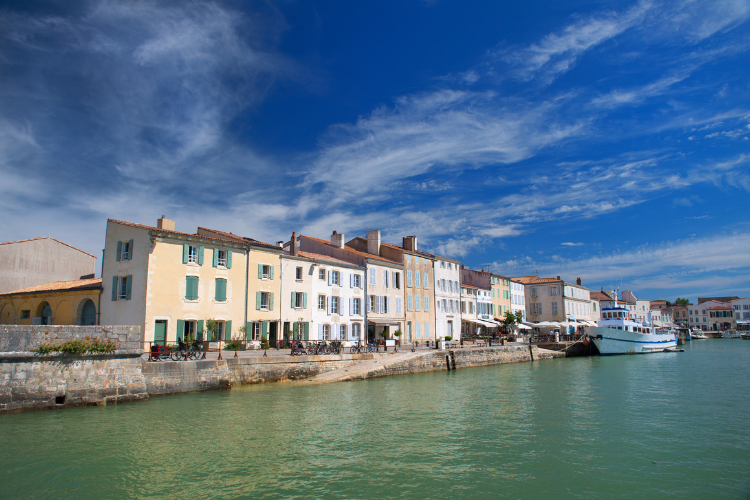
Saint-Martin-de-Ré
Visit Saint-Martin-de-Ré
Saint-Martin-de-Ré is the island’s enchanting capital, hugging the northern coast. Ramble the 17th-century ramparts that encircle an old citadel (now a prison) and a tangle of streets lined with chic boutiques and art galleries. Refuel at one of the cafés and restaurants flanking the picturesque harbour, and linger over a vin blanc on the waterfront.
Cycle across the island
While Île de Ré is only 30km by 5km, the Atlantic-coast island is crisscrossed with 60-plus miles of bike trails – all flat, thankfully. This cycling network connects a string of villages, weaving past vineyards and beaches, around old forts and ruined abbeys, and through fragrant pine forests. Bird-watchers should loop northwest to the Lilleau des Niges National Nature Reserve, where salt pans and marshes lure migratory avians. To hire a bike, Cycland and YooToo are good options.
Go antique hunting
To the west of Île de Ré, the black-tipped white spire of a 15th-century church today beckons antique-hunters to Ars-en-Ré, as it once guided sailors in from the seas. These shoppers are lured for another reason: the streets brimming with bric-a-brac stores and art galleries. Elsewhere, Saint-Martin-de-Ré is peppered with antiques shops (try Antiquités Barbotine or Antiquités Barbotine), while La Flotte Île de Ré holds a daily flea market.
Climb to the island’s summit
At Île de Ré’s westernmost tip, the 194ft-high Phare des Baleines lighthouse dates back to 1854, when it first started guiding ships to the island’s shores. Today, you can ascend 257 spiral steps to reach the top, where the views to mainland France make the calf-shredding climb worthwhile. A museum at the foot reveals more about the history of the lighthouse.
Now you’ve read our destination guide to Île de Ré, France, why not check out our Best Île de Ré Beaches and our Things To Do in Île de Ré ?

One Response
Magnifique !!!
Leave a Reply Cancel Reply
Your email address will not be published.

A Lady in London
And Traveling the World
Lady’s Ile de Re Travel Guide
Today I want to share my Ile de Re travel guide with you. This jewel of an island off the Atlantic coast of France is one of my favorite places in Europe. It’s worth a special trip.

Ile de Re Travel Guide
It wasn’t until I moved to the east coast of the US for college that I heard the word ‘summer’ used as a verb. Wealthy New Yorkers summered in the Hamptons, Bostonians on Cape Cod.
I had always summered right at home in California, and thought them all suckers for having to relocate just to go to the beach. They were smug; I was lucky.

But now that I’m in Europe I understand their challenge, and this week I’ve discovered how to summer like a Parisian on a secret little island called the Ile de Re.
The Hamptons of Paris, this picture-pretty isle off the west coast of France is where well-heeled Parisians escape city life in July and August.
A 5-minute drive from La Rochelle airport, it’s also a place that savvy Londoners can decamp to when we’re in need of sun, sand, and beaucoup de island charm.

I learned about the Ile de Re from a Parisian friend years ago, and have wanted to travel to the island ever since.
In the dead of January I got so desperate for summer that I booked a flight to La Rochelle and started dreaming of island life. And now I’m here and excited to bring you my Ile de Re travel guide.

As soon as I land my dreams come true. Long sandy beaches, storybook towns, and bright flowers welcome me to the Atlantic isle, a fresh ocean breeze blowing away all of my urban cares.

Ile de Re Hotel
My base for three days is Sainte Marie de Re, one of ten villages on the island. The tourism board has arranged my stay at Atalante Relais Thalasso & Spa , where my spacious suite overlooks the grassy dunes along the coast.
I have my breakfasts and dinners here and spend the rest of my time exploring the island.

Cycling on the Island
And the best way to do so is by bike. The Ile de Re is famous for its cycle-friendliness, with extensive bike paths all up and down the 19-mile (30-kilometer) long island. I pick up a bike from the hotel on my first day and set off to explore.

What I find awes me. The Ile de Re has an amazing mix of coastal beauty, inland forests with waist-high ferns, fields full of orange and scarlet poppies, and lovely seafront towns.
There are also adorable donkeys—historically they sported striped trousers!—an acceptable replacement for sheep, my normal farm animal obsession.

I cycle down tiny cobbled streets full of whitewashed houses with shutters in every shade of green, along salt flats where the famous fleur de sel is produced, through vineyards—like everywhere else in France, there’s a lot of wine produced on this island—and beside oyster beds. As I take it all in, I start to fall in love with the Ile de Re.

Ile de Re Markets
The feeling grows as I explore the village markets. Each town has its own, from a little one in Sainte Marie de Re to a gorgeous one in La Flotte and a big one in Le Bois Plage en Re.
Food stalls and covered halls offer everything from fresh cheese to spicy salami, larger-than-life seafood, and briny green olives, all of it tempting my taste buds with tantalizing aromas and bright colors.

Ile de Re Villages
Bigger villages like Saint Martin de Re—the unofficial island capital—also have lots of cafes and historic fortresses lining the marinas.
So do impossibly quaint little ones like La Flotte, which deservedly won a place among the most beautiful villages in France.
Each place I visit has a charming carousel and little streets just off the waterfront that offer an abundance of shops and cafes, perfect for browsing or buying.

The side streets reveal even more beauty, as rose bushes burst with color and fill the air with the sweet scent of the season.
Irises range in hue from linen white to sunshine yellow and midnight purple, competing with their floral cousins for attention. It’s hard not to photograph every street I venture down.

The stretches between the villages are filled with beaches. At low tide many of them are punctuated with locals prying shellfish out of the sand, a long tradition on the Ile de Re.
Others are famous for surfing, sailing, and kitesurfing, and still more for their dunes and views.

On my first day I cycle over 25 miles (40 kilometers), determined to see the remote village of Loix and its famous salt marshes. The next day I make it 16 miles (25 kilometers) before my legs give out.
I don’t even make it up to the northern end of the island, where there are more landscapes and villages to see. This island is much bigger than I anticipated.
I do, however, make it to the spa. My hotel is home to Relais Thalasso, a spa with saltwater pools and a sauna and steam room.
They’re the perfect antidotes to my aching muscles and exhausted eyes. Going to the spa is a great way to relax after a long day on the cycle paths and village cobblestones.

Ile de Re Travel
When my three days on the Ile de Re are over, I’m sadder to leave than I’ve been in a long time. This island has completely won me over.
Its pretty landscapes and peaceful villages show me why Parisians are eager to return every summer. I could do the same.

But first I want to do as the Americans do and travel to the Hamptons . I’m heading there for a wedding next month, and I’m excited to see how New York’s version of the Ile de Re compares to Paris’.
Given it’s one of the most popular summer travel destinations in the US, maybe it will finally convince my inner Californian that ‘summer’ can actually be taken seriously as a verb. I certainly hope so.
Find this post helpful? Buy me a coffee!
New here? Join thousands of others and subscribe to the A Lady in London blog via email .
Some of the links in this blog post are affiliate links. At no cost to you, I earn a small commission when you click on them and make a purchase. It doesn’t affect the way you shop, and it’s a great way to support the A Lady in London blog.
35 Comments on Lady’s Ile de Re Travel Guide
I’ve always wanted to visit that island. I read about it a few years ago and I knew I’d love it: it seems to have the perfect mix between Mediterranean and North European charm, doesn’t it? I hope we can spend a couple of days there in the future. Oh, so many nice places to go, so little time! xx, E.
Yeah, it’s a great place to visit. I hope you get a chance to make it out there someday!
Ile de Ré is lovely. I liked the pics. I hope you got local salts from there!
I did, thanks!
Looks so pretty. Never been there, but now so want to. Looking forward to your Hamptons post also – a part of the US I’ve always wished to see.
Thanks! I’m looking forward to seeing how the two compare.
Ille de Re looks absolutely idyllic. Another destination to add to my ever-growing list of places to see. I haven’t been to the Hamptons either, so I’m looking forward to reading your comparison.
Thanks! I’m excited to see how they compare, too!
It’s one of my favourite places in France, I also love La Rochelle on the mainland. I didn’t know about the donkeys though, why did they wear striped trousers?!
Apparently to protect their legs from insect bites!
I love the French countryside, even more than the cities. You’ve taken some great pictures.
I have never heard of this place but it looks and sounds delightful. I love your comment about understanding the need to venture to a beach in summer when you live somewhere cold, I am originally from Sydney but now live in London and it’s only now I understand the use of summer as a verb as well!
Glad you can relate!
Man, now I am ready to Summer 🙂 This getaway has all the summering requirements – beach, flowers, and glorious food.
This looks so nice all around, but I’m longing for the quiet and coziness of what I can see of your hotel room. I just want a bed to call my own right now…
Yeah, it was definitely cozy!
Wonderful photos of one of my favourite places in the world. I’m glad you liked it!
Thanks! Yeah, it’s so lovely there!
Aw I visited this island as a teenager with my parents. It was lovely then and it still look lovely now! Great post G x
Wow, beautiful pictures and your post has me dreaming of this island! Do you think it would be a suitable place to go with small children (aged 2 and 4). I’m thinking we could put them on the back of the bikes and ride down to the beaches. Janie x
Potentially! I’m not an expert in family travel, though.
Yes – we have been many times. It is an idyllic place for young children. Beautiful sandy beaches and you can hire little trailers in which they can sit, while you cycle through the salt marshes. Don’t hesitate! I can’t recommend it highly enough – you won’t be disappointed!
Glad you like it there!
Which are the nice beaches? We are about to book a trip with our two boys 9 & 12 and would be great to be near a nice beach…
I’m going to Provence in a few weeks, but really want to visit Ile de Re soon. Some of my Parisian friends have holidayed there (not quite long enough to say summered) and it looks just beautiful.
That’s great! Provence is amazing, too. I hope you have a good time!
We have traced our ancestors back to 1685 to this beautiful island. It is now on my must visit list.
Wow, nice! I hope you can visit sometime!
Been many times for our summer holidays and absolutely love it. We always stay in La Flotte but hire bikes and cycle everywhere. It is the perfect destination for families with young children. The summer months are never too hot, not the sweltering heat of the south of France but warm enough for long days on the beach. We will be returning this year at the end of July and I can’t wait.
That’s great! It’s such an amazing place to travel! I hope you have a lovely trip!
I loved your post about Ile de Re! As a fellow Californian, now living just outside London in the lush (but often cold and damp) countryside for the last 3 years, I completely get the summer verb! I’ve just booked 2 weeks in a lovely cottage near La Flotte for early September and can’t wait to go!! We plan to cycle everywhere, shop at the markets and cook lovely seafood & grilled veg on the bbq, and wander the beaches. Heaven 🙂
Amazing! Have a wonderful time!
Leave a Reply Cancel reply
Your email address will not be published. Required fields are marked *
This site uses Akismet to reduce spam. Learn how your comment data is processed .
© Copyright A Lady in London 2007 - 2024. Privacy Policy.
Skip to content
Destinations
- The Dordogne & South West
- Vendée
- Aquitaine Coast
- Ile de Ré
- Fornalutx & Sóller
- Pollensa & Puerto Pollensa
- Sivota & Epirus
- Bozburun Peninsula
- Islamlar & Uzumlu
- Calvi & The Balagne
- Porto Vecchio & Bonifacio
- The Valinco
- Villas with childcare
- Luxury villas
- Off the beaten track villas
- Car-free villas
- Large group villas
- Villas together
- Romantic villas for two
- Family Favourite villas
- Teen-friendly villas
- Beachfront villas
- Villas with heated pools
- Villas near the beach
- Villas near a restaurant
- Family villas
- Simpson Hotels
- Partner hotels
- Family hotels
- Beachfront hotels
- Adult-only hotels
- Romantic hotels for two
- Hotels with childcare
- Car-free hotels
Holiday inspiration
Holiday Types
- Couples holidays
- Beach holidays
- Large group holidays
- Car-free holidays
- Twin centre holidays
- 10 night holidays
- Countryside holidays
- Walking holidays in Greece
- Special Interest Holidays
Family holidays
- Holidays with childcare
- Easter holidays
- Half-term holidays
- Multi-gen holidays
Collections
- Simpson Exclusive
- Simpson Secrets
- Simply Simpson
- Simpson Kids
- Simpson Bespoke
More inspiration
- 2024 Holidays
- Our digital brochures
- Holiday gift vouchers
- The Simpson Travel Book Club
- Experiences and Activities
- Why Simpson Travel?
- Travel arrangements
- Advance Registration
- Our heritage
- Loyalty Club
- Our Destination Specialists
- Giving back
- Our Partners
- Responsible Tourism
- Simpson Travel App
- Sign up to emails
- Gift Vouchers
- Press & PR
- Property owners
Search by property or destination…
In this section...
- Where to go
- Our guide to Ile de Re
- Be Inspired
Our guide to Ile de Ré
- By Simpson Travel
- 23 Mar 2020
Just off the west coast of France near La Rochelle, life on Ile de Ré is a civilised affair. The picturesque towns and villages blend culture with good-living, bistros and bars enjoy the elegant laissez faire that only the French can muster, and the locally harvested oysters are regarded as the best in the world. Throw in the ease of access from the mainland, the natural beauty of the landscape and the impeccable taste of the locals and it’s easy to see why this irresistable little island attracts such a loyal following.
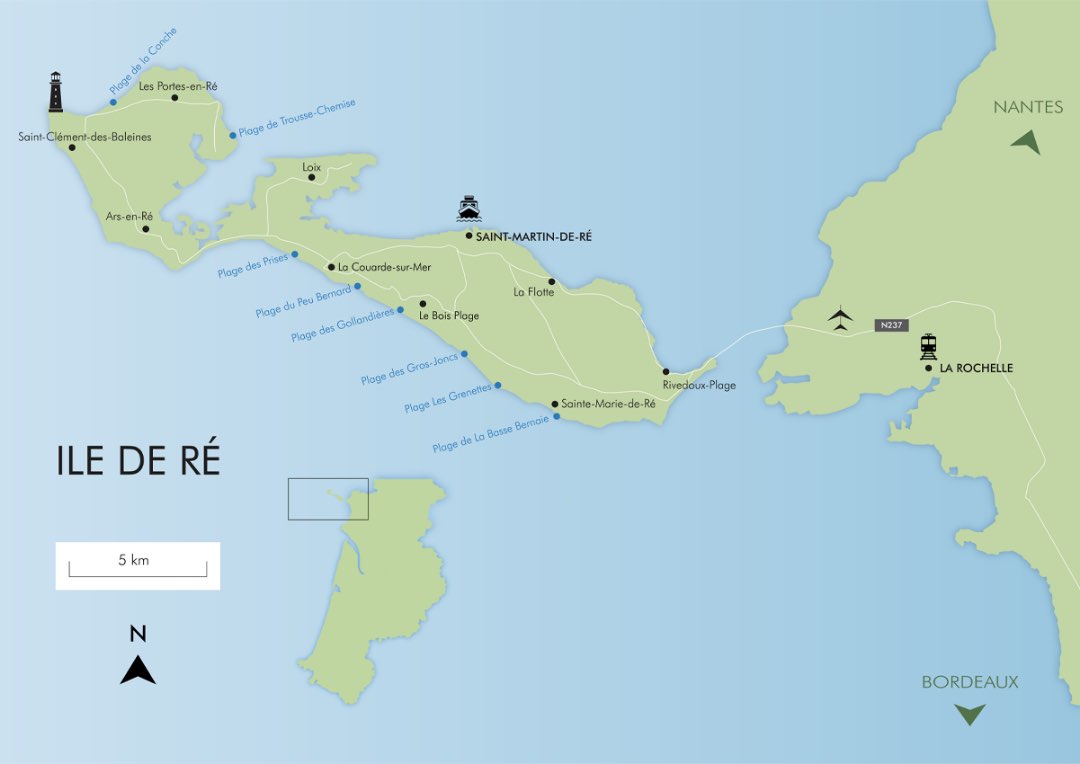
Island life
Quick to get to and simple to navigate thanks to an extensive network of pathways and cycle trails, Ile de Ré is easy to reach whether you prefer planes, trains or automobiles. Less than 10km from La Rochelle airport, or accessible in under three hours from Paris by train, it’s as realistic a possibility for a long weekend away as it is for a two-week summer holiday. This VIP island is linked to the mainland by an impressive bridge spanning almost two miles of Atlantic Ocean and it attracts a sophisticated crowd, where quiet good taste and understated style meet bohemian flair and bourgeois chic. The UNESCO listed capital Saint Martin is a cultural and gourmet haven and the island’s smaller villages are a maze of immaculately painted houses brimming with honeysuckle, jasmine and wisteria. Wandering through the narrow streets, it’s impossible not to wish that life could always be so beautiful.
One island, ten villages
The ten harbour towns and villages that make up the island are straight out of the pages of a lifestyle magazine. Wooden shutters painted in a picture postcard palette of misty blues and earthy greens adorn pretty pebble-white houses and even the artistic street signs and door knockers are a reflection of the island’s highly creative air. The pedestrianised streets offer a unique feast of historical monuments, artisan boutiques, colourful markets and excellent restaurants. As you might expect, seafood is a particular speciality and the locally produced oysters are an obsession, but the island also takes ice-cream very seriously, with whole menus given over to design-your-own-flavour combinations and tempting sundaes. And this being France, you can rely on an excellent selection of wines by the glass wherever you go.
Beaches and bicycles
Cycling is the favoured mode of transport, offering the potential for a car-free holiday and an opportunity to reconnect with nature and enjoy a simpler way of life. With 100km of gloriously unspoilt coastline, accessed by an extensive network of cycle trails criss-crossing the island through fields and vineyards, woodland and salt marshes, cycling is as much a part of life on Ile de Ré as the ebb and flow of the tide. Wide stretches of immaculate golden sand, backed by dunes and pine forests, give parts of the island a wild and remote feel, while other beaches offering watersports, children’s activities and play areas evoke a classic summer holiday atmosphere.
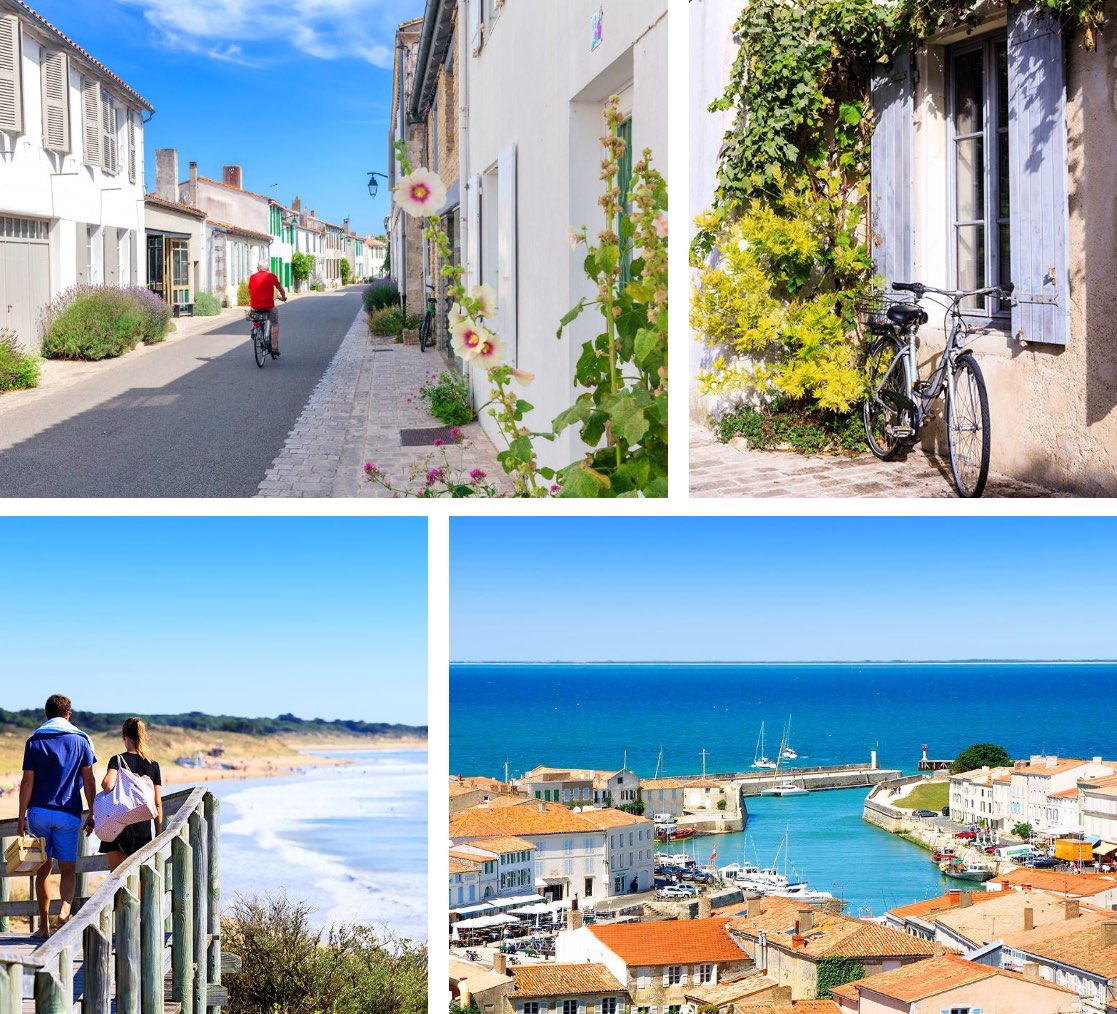
Markets and Monuments
From the impressive UNESCO-listed fortifications in the capital Saint Martin to Phare des Baleines , the famous lighthouse at its northern tip, Ile de Ré has its fair share of historic monuments. In 2012 it became France’s first island to join the country’s celebrated regions of art and history and the creativity of its inhabitants is evident as you wander the pedestrianised streets of the village centres; artisan shops exhibit distinctive homewares (Rétais), local artists showcase their latest works and stylish boutiques lure you in with an eclectic array of high-end, bohemian fashion. The colourful markets are also a big part of life on the island, each village hosting its own in the height of summer.
Stay in town
The island’s ten harbour towns and villages are connected by the many cycling trails that cross the island and are all within walking distance of a local beach. For those who like to be amongst the action, Maison des Songeurs in Le Bois Plage is the perfect pied-à-terre for two whilst pretty Maison Merindot in Saint Martin is ideal for a small family. And if you’re looking to host a sophisticated house party, look no further than Villa Saint Martin , our wonderfully elegant 6-bedroom retreat, tucked away behind one of the capital’s historic streets.
Stay amongst the vines
Luxury hotels in the island capital Saint Martin come at a price and attract significant crowds. For a quieter alternative with an altogether more laid-back appeal our delightful hotel in Sainte-Marie-de-Ré, the island’s oldest village, retains an abundance of quiet charm and classic island chic, within easy striking distance of the popular east coast harbour towns. Les Vignes de la Chapelle sits at the edge of a vineyard just a short stroll through the vines from the coastal path. Stay for a week, enjoy a short break or combine a few nights here with a week in a villa on the Aquitaine coast; the choice is yours.
View all... Ile de R é villas Ile de Re
- < Previous Inspiration
- Next Inspiration >
Simpson Travel in the media
‘[Simpson Travel] specialise in the sort of magical, unspoilt destinations my family loves’ Author: The Telegraph
‘So how did we find the near-perfection that was Villa Cabanellas in Mallorca? The first step was to approach… Simpson Travel… we needed expertise, not just blinding choice.’ Author: Sunday Times Travel Magazine, The Villas Handbook
‘The Simpson Travel check-in at Heathrow’s Terminal 5 was seamless.’ Author: Family Traveller, Katy Hill
‘Where Simpson [Exclusive] really excels is in its first-hand knowledge of properties and destinations’ Author: House & Garden
‘Simpson [Exclusive] delivers holidays that combine sunshine, five-star luxury and friendly service’ Author: House & Garden

Back to top
The Good Life France
Everything You Want to Know About France and More...
Top ten things to do in Ile de Ré
- Janine Marsh
- Poitou-Charentes

Small enough to drive from one end to the other in around 30 minutes, Ile de Ré has an intimacy that’s alluring but never leaves you feeling restricted. Despite its size, the landscape appears to unfold for miles. Expect fields of flowers, vineyards, salt marshes and the most glorious coastline plus the prettiest little villages. It’s what makes this island a favourite with the French. Take a look at the best things to do in Ile de Ré:
Cycling on the Ile de Ré

Ile de Ré is connected to the mainland by a bridge which was completed in 1988. This hasn’t affected the charm of ‘the White island’ at all though at peak visiting times, it can be busy driving over the bridge. Cycling is a favourite pastime on the island. No wonder, it’s pretty much completely flat. It takes around 2 hours to go from one end to the other, a lovely ride. There are more than 60 miles of signposted cycle paths which wind through vineyards and fields. And with the same number of sunshine hours as the south of France, cycling is the best way to see the best bits of this pretty little island. It’s easy to hire a bike on the island with loads of outlets in the towns.
Saint-Martin de Ré

Saint-Martin-de-Ré is the main town on the island, the mini capital of Ile de Ré. This is where you’ll find some of the best restaurants, bistros, bars, and ice cream shops. The town is protected by Vauban-built fortressed walls. It spreads out around an almost impossibly gorgeous waterfront. Saint-Martin is also a World Heritage site. In the 1670s, Louis XIV’s French military engineer Vauban, was commissioned to overhaul the island’s defences. The fortifications now have UNESCO heritage status. Climb the bell tower of the church for a panoramic view over the roofs of the terracotta-roofed houses. You may well spot donkeys dressed in stripy trousers, a local tradition. It’s a hangover from the days when mosquitoes were a problem – they’re not now but hey, who doesn’t love a donkey in a pair of trousers!
Take a Tuk-tuk ride

Salt marshes

You can’t really do anything at the salt marshes but it’s fascinating to see how the salt that flavours our dishes is produced. On the island they’ve been producing it since the middle ages. Fleur de sel salt is famous in France but it was hardly known outside of the Ile de Ré 20 years ago. People saw it on TV on programmes like MasterChef and wanted to buy it. Now, fleur de sel is revered. It costs several times what the originally salt costs as production is much more time consuming.
Production depends on terroir, the strange French word that’s untranslatable into English but includes the climate, the land and more. Fleur de sel needs the right conditions – especially wind and sun. The crystals are much finer than ordinary salt. The process of making it is totally organic and around 1kg of fleur de sel produced for every 10kg of ordinary.
I loved the salt honesty boxes you can find by the salt marshes. It makes for a perfect (not heavy) souvenir of your visit.

You’re on an island, it’s de rigeur to take a boat ride surely! And there’s plenty of choice from speed boat rides to inter island cruises, fishing trips and yachting. Boat rides can be booked at Saint-Martin, Ars, La Flotte and Portes-en-Ré (details on Ile de Ré Tourist Office website, bottom of this post).
Ice ice baby – ice cream heaven
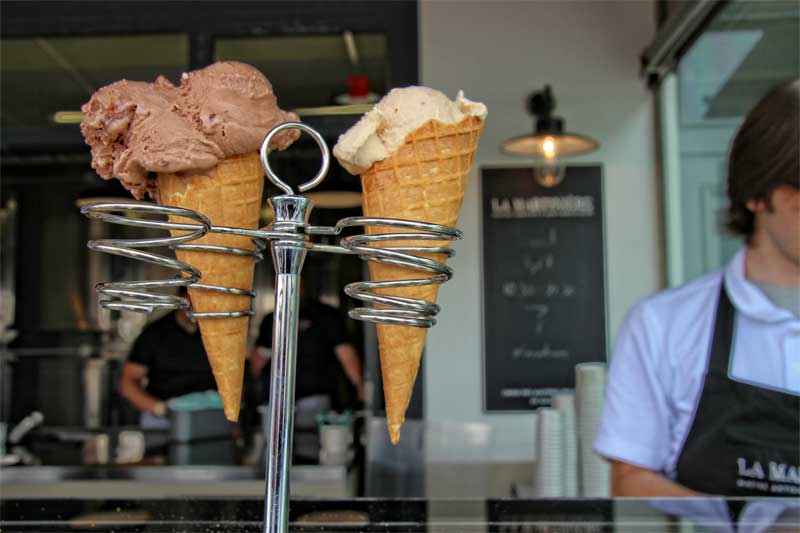
If you’re an ice cream fan, then La Martinière on the quay in Saint-Martin de Ré will truly float your boat. But take my advice, don’t go for the oyster ice cream or potato flavour ice cream (leave those to the tourists – they’re not for savvy visitors of taste like you). Try the frozen macarons, the mouth-watering lollies or your favourite flavour ice cream. It’s very moreish but sitting on the edge of the port with a sweet treat = perfect!
Head to St Martin de Ré if you like to shop, beware they are irresistible! There are some shops which are high end with price tags to match, but they’re not all like that. I came home with clothes and knick knacks I just couldn’t leave behind and they weren’t expensive. Seaside chic at its very best.
Relax on the beach

There are seemingly endless stretches of silky golden sand surrounding Ile de Ré. More popular beaches like Le Bois-Plage-en-Ré can be busy but if you want to relax and chill in privacy, there are loads more quieter beaches such as La Couarde-sur-Mur or La Noue. Take a picnic, and spend the day staring out over the Atlantic, listening to the waves and just feeling the moment

Another “plus beaux village” on Ile de Ré, La Flotte is officially one of the prettiest villages in France. A tiny harbour town that well worth stopping off for a wander and to discover the lovely coffee shops and bistros, shops and art galleries. Don’t, whatever you do, miss the market, it really is fantastically pretty with a great atmosphere.
When to go to Ile de Re

Best months to go as far as I am concerned are May, June, September. It gets packed in summer but if you go then, head north for quieter parts of the island. My favourite time is early June before the crowds. At this time, the island smells of honeysuckle full bloom, fields of poppies light up the countryside, hollyhocks create splashes of colour in almost every street, figs are ripening and roses drip from walls and window boxes…
More information
Top ten things to do in La Rochelle Where to eat out in La Rochelle – the places the locals love Fun things to do for the family in La Rochelle
Ile de Ré Tourist Office: www.holidays-iledere.co.uk/ and for more information on what to do in Charente and Charente-Maritime: www.atlantic-cognac.com
Latest Posts

Fascinating French history of the Statue of Liberty

Newsletter from authentic France!

Inheritance tax planning for US expats in France

Bespoke Travel Design Agent

The fabulous cuisine of Pas-de-Calais

What to see and do in Cognac and close by
Related posts.

Discover 4 historic towns in Vienne, Poitou-Charentes

Guide to La Rochelle Charente-Maritime

A local’s guide to Cognac the town

What to do in Talmont-sur-Gironde, Charente-Maritime
Get updates and stay connected - subscribe to our newsletter.
Everything You want to know about france and more…
The Good Life France is the leading independent website about all things French from travel to culture, gastronomy to property and practical guides & more…
Let's get social
- Search Please fill out this field.
- Manage Your Subscription
- Give a Gift Subscription
- Newsletters
- Sweepstakes
With Vineyards, Beaches, and Quaint Villages, Île de Ré Is France's Best-kept Secret
On this pristine, out-of-the-way island off the coast of northwestern France, not much changes. That's why it's the perfect laid-back summer vacation spot.
Thomas Chatterton Williams is a freelance writer and author of the books "Losing My Cool" and "Self-Portrait in Black and White." His work has appeared in The New York Times Magazine , Travel + Leisure , The Atlantic , and The New Yorker .
A decade ago, my French wife and I moved from our apartment in Brooklyn to the Right Bank of Paris. I'd be lying if I said it wasn't a challenge to acclimate myself to the rain and low skies that ruthlessly blot out the winter sun in northern France. On the other hand, there's nothing like a European summer. Vacations are prioritized, and you can travel between a dozen countries with the ease we Americans move up and down the Eastern seaboard.
The summer of 2020 was, for obvious reasons, the first in 10 that we didn't set foot outside France. We'd abandoned our home in Paris back in March, days before the nationwide lockdown, to hole up with friends in a village in the Loire-Atlantique, just below Brittany. In July, we doubled down on our urban exodus and found a rental house in a tiny port town in Brittany itself, on the Côtes d'Armor, where we télétravail -ed from the garden, drank the excellent local cider, and swam in the cold, clear ocean.
By that point, some of our friends reflexively began to look again to Italy, Greece, and Spain for their vacations, willing their lives back to some semblance of normalcy through stubborn habit. But our stint along France's bracing northwestern coastline had turned my wanderlust inward, reawakening in me an appetite for this country—an embarrassment of both natural and cultivated riches—that open borders and too-cheap flights had dampened.
And so in early August, we continued our exploration of the beguiling Atlantic and headed for the Île de Ré, a 33-square-mile oasis of sand dunes, marshland, and sprawling vineyards off the coast of La Rochelle, which is just 2½ hours from Paris by high-speed train.
The Île de Ré is something like a French Martha's Vineyard, and the island is far more popular with French tourists than it is with visitors from outside the country.
If Brittany evokes the dramatic seascapes of Maine or Cape Cod—sailboats bobbing beneath painted lighthouses, heavy waves beating against a jagged coast—the Île de Ré is something like a French Martha's Vineyard. And like its Massachusetts counterpart, the island is far more popular with French tourists than it is with visitors from outside the country. This lends it a pleasing air of authenticity that is, like everywhere, harder to come by than it once was.
Accessible only by ferry until 1988, today the Île de Ré is a 40-minute taxi ride from the Gare de La Rochelle via a bridge that joins the island to a swath of mainland given over to heavy industry. Perhaps this unglamorous approach is why, on first blush, the Île de Ré can present a deceptive shyness, greeting a visitor with a relaxed modesty and angling itself away from France and out to sea, demanding you venture deeper inside to engage its numerous intrinsic charms.
Along the boat-lined quayside of the old port town of St.-Martin-de-Ré, my cab driver deposited me in front of a handsome 17th-century limestone façade. Large blue-and-white-striped umbrellas held the tenacious midday sun at bay over a cluster of café tables, marking the entrance to the Hôtel de Toiras . I was due to stay here for the first night, in a generous suite of rooms overlooking the harbor, and my wife, Valentine, and our two children, six-year-old Marlow and two-year-old Saul, were to join me for three more.
In the spring of 2020, the Rétaises, as the 20,000 mostly retired year-round inhabitants of the Île de Réare called, found themselves inundated by some 4,000 well-heeled second-home owners fleeing Paris, Bordeaux, and France's other virus-ridden metropolitan centers.
But it was far from the first time the island had been invaded. The extravagantly christened Jean Caylar d'Anduze de Saint-Bonnet, Marquis de Toiras, for whom our lodgings had been named, secured a place in history in the 1625 Recovery of Ré Island, in which he beat back the Huguenot rebels of La Rochelle. He was then named governor of the territory and repelled the Duke of Buckingham's forces during the three-month Siege of St.-Martin-de-Ré, just two years later.
The fortifications that Toiras initiated—and that later, Sébastien Le Prestre de Vauban, one of France's greatest military engineers, ingeniously expanded—dominate St.-Martin's shoreline and, along with the semi-ruined, namesake church, lend it a distinctively historical flavor. I hung my clothes and stowed my bags in the vast wallpapered dressing area of my room at the hotel—and set out to explore.
Crossing the threshold from the cool tranquility of the Toiras lobby back into the harbor's bustle, I was immediately reminded that it was August, high season. All of my friends who were knowledgeable about the island had advised me that the best time to visit was after the rentrée, in September or October, or just before the rush, between April and June.
This year, after eight weeks of mandatory quarantine, I found it oddly reassuring to be among these meandering masses. Hell may be other people, as Jean-Paul Sartre so memorably put it, but there are times when other people can be heavenly. This year, at least, I didn't want to be left alone.
In ordinary times, I could see their logic, but this year, after eight weeks of mandatory quarantine, I found it oddly reassuring to be among these meandering masses. Hell may be other people, as Jean-Paul Sartre so memorably put it, but there are times when other people can be heavenly. This year, at least, I didn't want to be left alone.
As it happened, St.-Martin, being one of the two most densely populated municipalities on the Île de Ré, had a mandatory outdoor mask policy in effect. But the island is still very much a part of France, and this means that sometimes one must choose between being safe and being chic.
I found a table at Le Belem, one of the many inviting terraces that line the inner harbor and serve up towering platters of fruits de mer, and I cracked the Rachel Cusk novel I'd been meaning to read. When I glanced up, a pair of elegantly dressed middle-aged women were standing nearby, greeting each other haltingly before carefully pulling down their face masks to double-kiss.
Perhaps the most noticeable physical feature of the Île de Ré is the pleasantly recurring motif of sun-bleached workers' cottages, with Spanish tile roofs and cheery, asparagus-green, silt-gray, or chalky-blue wooden shutters. These almost uniformly modest structures come sheathed in hollyhocks and exude a sense of understated luxury and effortless good living. Though many of the older lots were originally set aside for salt workers who labored on the island's fortifications, they now rival in price per square foot those in the tonier neighborhoods of Paris. After my satisfactorily gluttonous meal, I wandered through the maze of residential backstreets, some of them as narrow as a sofa, until I emerged at the base of the citadel.
There, I found myself in near-solitude as I ascended a verdant hilltop, looking out over a series of deep folds and centuries-old, grass-covered gashes engineered by Vauban. These were really waterless moats—in some places the width of Broadway or even wider—that could be flooded in the crack of a cannon shot with the surrounding ocean water, were an invading army to become trapped in them. To anyone approaching by sea, however, they remain below the sight line. I marveled at Vauban's cunning and took the scenic route back to my hotel along that spectacular coast, its football fields of emerald-green marshland giving way to sparkling blue waves.
At lunch the next day, I ate what felt like the platonic ideal of the island's ubiquitous seafood platter at a homey little restaurant called Le Tout du Cru ("Everything Raw"), tucked into a photogenic alleyway dominated by a shuttered old cinema. From there, I proceeded to an ice cream tasting that had been arranged for my family, but there had been a slight misunderstanding about the time of my wife and children's arrival.
Xavier Cathala, the affable owner of a 50-year-old institution of artisanal glace, La Martinière , led me away from the ceaseless queues in front of his main shop—where he serves some 6,000 customers a day in high season—and into a quiet room in his patisserie next door, where I was presented with 22 heaping bowls of both classic and extravagantly conceived and executed ice creams and sorbets.
"But where are your children?" Cathala laughed, gesturing at the bounty spread before us, "and your wife? We were expecting them!" I bashfully explained that they were delayed driving down from Brittany , but that it would be my burden now to dutifully pick up their slack.
It was hardly a challenge. There was a crisp beer-flavored sorbet, as well as a scarlet-hued variety made from raspberries and red peppers. The ingredients are seasonal: I was told that in September there is a fig option to die for and, from time to time, glace à l'huître (yes, oyster). If the latter sounds too outré, the vanilla, pistachio, and hazelnut staples were as rich and fragrant as anything I'd ever come across in Naples or Rome. But as Cathala was quick to point out, he makes them with less air, à la française, so they are denser and colder on the tongue. On this scorching-hot day, that distinction felt like it mattered.
By the time my family had settled in the next morning, I was eager to roam beyond the confines of St.-Martin. By far the most pleasant way to do this is to take advantage of the island's incredible network of pistes cyclables, or bicycle paths—some 68 beautifully paved miles that crisscross endless acres of vineyards and salt marshes to connect the Île de Ré's 10 distinctive municipalities. My friend Henri, who several years ago began trading late-night weekends in Paris for predawn wake-up calls to go surf the winter swells that crash against the island's shores, advised me to head for fashionable Les Portes-en-Ré in the far northwest.
Some 80 percent of the landmass of the island has been preserved, with no construction allowed; there are no grand hotels clogging the beaches, no enormous villas fencing you out, no high-rises obstructing the views. Everything remains on a genuinely human scale.
I'd plotted a loose itinerary that would get us there and back in about three hours. We decided to make a day of it, with lunch and a few stops at the beaches in between. Around the corner from the Hôtel de Toiras are several bicycle rental companies. Considering the distance we planned to cover, we picked up two electric models from YooToo, with a sporty three-wheel chariot attachment on my wife's for Saul, and a tandem seat for Marlow on mine.
On the way out, we passed one of the island's signature quirks, les ânes en culotte, or donkeys that roam the seaside fields outfitted in custom-made red and blue pants originally conceived to protect them from mosquitoes as they worked the salt marshes. Today, they're principally worn to provide the visiting children with something to point at in awe. Somehow, my daughter was not nearly as intrigued by this sight as I'd anticipated, so off we went to pick up the trail.
The summer pleasures we had so far experienced on this trip, while wonderful, had not been entirely dissimilar to those of other French holidays we'd had. But it was on this bike ride that the specificity of the Île de Ré's charms began to hit me. Some 80 percent of the landmass of the island has been preserved, with no construction allowed; there are no grand hotels clogging the beaches, no enormous villas fencing you out, no high-rises obstructing the views. Everything remains on a genuinely human scale.
As we raced across miles of vineyards, locked in sync with the hundreds of other cyclists coming and going, I had the fleeting impression that, from a God's-eye-perspective, we'd resemble nothing more than one of those ant-army highways cutting through the grass. Yet, far from making me resentful of the hordes around us, this realization left me appreciative of the fact that here, even in high season, so many human bodies could traverse such considerable distances without relying on combustion engines, and before a backdrop of unblemished natural beauty.
The Île de Ré is said to enjoy a microclimate that leaves it with a similar amount of sunshine to the south of France, though it typically is blessed with fresher Atlantic air. We happened to visit during a heat wave, and that cool breeze evaded us as we finally parked our bikes in Ars-en-Ré, the area in the southwestern part of the island where the former prime minister of France, Lionel Jospin, has kept a house for years.
Every side street you turn in to in Ars is a living Pinterest post of casual French seaside chic. Waiting for our lunch reservation at the jam-packed Chez Rémi, we took the opportunity for a stroll. Saul, whose love for all manner of motorized vehicles is as unwavering as it is precocious, drew my eye to a gorgeously preserved vintage Land Rover Defender, roof removed, body painted the exact same hue as the house's sage-green shutters.
We popped into Marie et Angele, on Rue du Havre, a lovely and inconspicuous little vintage shop dealing in military surplus and sailing staples as well as perfectly beat-in bleues de travail, or worker's jackets, of every faded patina. My wife and I both picked out the same cream-colored long undershirts for when the weather turns autumnal.
Every side street you turn in to in Ars is a living Pinterest post of casual French seaside chic.
Back at Chez Rémi, we ordered a quick lunch of chicken Caesar salads and Aperol Spritzes—man cannot, it turns out, live on fruits de mer alone—then cycled out to the decidedly family-friendly Plage de la Conche, at St.-Clément-des-Baleines, where the sand was baked with sun and the clear blue water was shallow and calm as a cool bath.
When the heat became unbearable, we climbed back onto our electric caravan and toured the neighborhood of Les Portes, as Henri had suggested. It was quiet and residential in a comfortably gentrified way, without anything like the tourist volume of St.-Martin or even Ars. It was where we would get a place, I told Valentine, if I had an extra million or two to spare. She shushed me (truth be told, I say some version of this refrain to her everywhere new that we go, though such promiscuity certainly makes it no less true) and stopped to point out the wry humor in the names of the exquisite little cobblestoned streets called impasses : "Impasse du Paradis" (literally, dead-end of paradise); "Bout du Monde" (end of the world); "Sortilèges" (sorcery!).
By the time we pedaled through the vast rust- and pink-tinted salt marshes in Loix and endless vineyards, through the fortifications and back to the Toiras, even with the much appreciated aid of our electric motors, we were exhausted from the relentless sun. Before we even finished our aperitifs at O Parloir , a comfortable outdoor restaurant, it was clear that nothing short of immediate sleep for Saul and room-service Bolognese for Marlow would keep the peace.
On our last full day, our foursome split along gender lines: the women went hunting for gifts and antiques in the numerous well-stocked shops of St.-Martin, and the men climbed onto the electric chariot and cycled down to the nearby Bois-Plage, where Saul and I frolicked in the water until he was beat.
After a high-concept but hearty late-afternoon family lunch of deconstructed langoustines at Les Embruns , I glanced at my watch and realized it was nearly time for me to attend an oyster tasting. The delightfully hidden Ré Ostréa nestles rows of high tables between oyster beds and the lapping shores of the Atlantic. I ordered local rosé and did my best to polish off the three-point oysters and shrimp that came with it—until I realized that I was due back at the Toiras for dinner in less than three hours.
The centerpiece of the hotel is a lush interior courtyard garden, with palms and white rosebushes set beside harlequin paving stones, where the heaping breakfast buffet was served daily, and where, that evening, we ate an immaculate, farm-fresh meal.
As the children played in the garden and we were finishing our wine, Valentine glanced up to see that the only other diners left were a friend of a friend from Paris and her husband at the table behind us. When it comes to the artful science of vacation, the truth is that there is more than enough terrestrial heaven to go around in France—but no such thing as private knowledge.
Exploring Île de Ré
Where to stay.
Hôtel de Toiras : The opulent design of the 19 rooms at this quayside refuge in St.-Martin-de-Ré will make you feel like an aristocrat. Doubles from $447.
Where to Eat
Chez Rémi : Nab an outdoor table at this Ars-en-Ré institution. Prix fixe from $35.
La Martinière : Quite possibly the best ice cream and sorbet in France.
Les Embruns : High-concept riffs on the island's mainstays. Prix fixe from $14.
Le Tout du Cru : A standout raw seafood venue. Prix fixe from $18.
O Parloir : Artfully presented dishes in a vibrantly decorated space. Prix fixe from $39.
Ré Ostréa: Simple beachside dining with fresh oysters. Prix fixe from $29.
Le Belem: Perfect people watching in the heart of St.-Martin. 29 Quaide la Poithevinière; 33-5-46-09-56-56. Prix fixe from $16.
Where to Shop
Marie et Angele : Vintage work wear and military surplus. 37 Rue de Havre; 33-6-62-30-14-92.
Trip Planner
T+L A-List advisor Kathy Stewart(800-678-1147; [email protected] ) can arrange a visit that includes private walking tours with a local historian and a catamaran cruise along the coast.
A version of this story first appeared in the June 2021 issue of Travel + Leisure under the headline Absolutely Île de Ré .
Related Articles

TOURISM ILE DE RÉ
How to get to the ile de ré .
The Ile de Ré, also known as the White Ré, is located in the center of the Atlantic coastline, halfway between Nantes and Bordeaux, connected to the mainland by a curved bridge.
Nearly 3 km long, this bridge of the Ile de Ré tourism connects more precisely the small town of La Repentie, near the port of La Pallice, northwest of La Rochelle, to the point of Sablanceaux at Rivedoux Plage, east of the Ile de Ré.
There are several ways to get to the Ile de Ré.
- By car or by campsite
- By boat : The crossing takes visitors to the ports of Ars-en-Ré, La Flotte, Rivedoux Plage or Saint-Martin-de-Ré.
- On foot or by bicycle : On the bridge, lanes are specifically designed for pedestrians and bicycles, for whom the crossing is free.

The Ile de Ré in a few words
Located between the Antioch and Breton inlets, the Ile de Ré, with an area of 85 km², is the fourth largest island in mainland France, behind Corsica, the Ile d’Orléon and Belle-Île.
Jewel in the crown of Charente-Maritime, the Ile de Ré is appreciated for its fine sandy beaches and has ten traditional villages each surrounded by varied landscapes.
The Ile de Ré is the first island to be labeled Pays d’Art et d’Histoire, in July 2012.
This label of the Ministry of Culture rewards the territories which engage in an active approach of sensitization concerning their heritage, their architecture and their living environment.
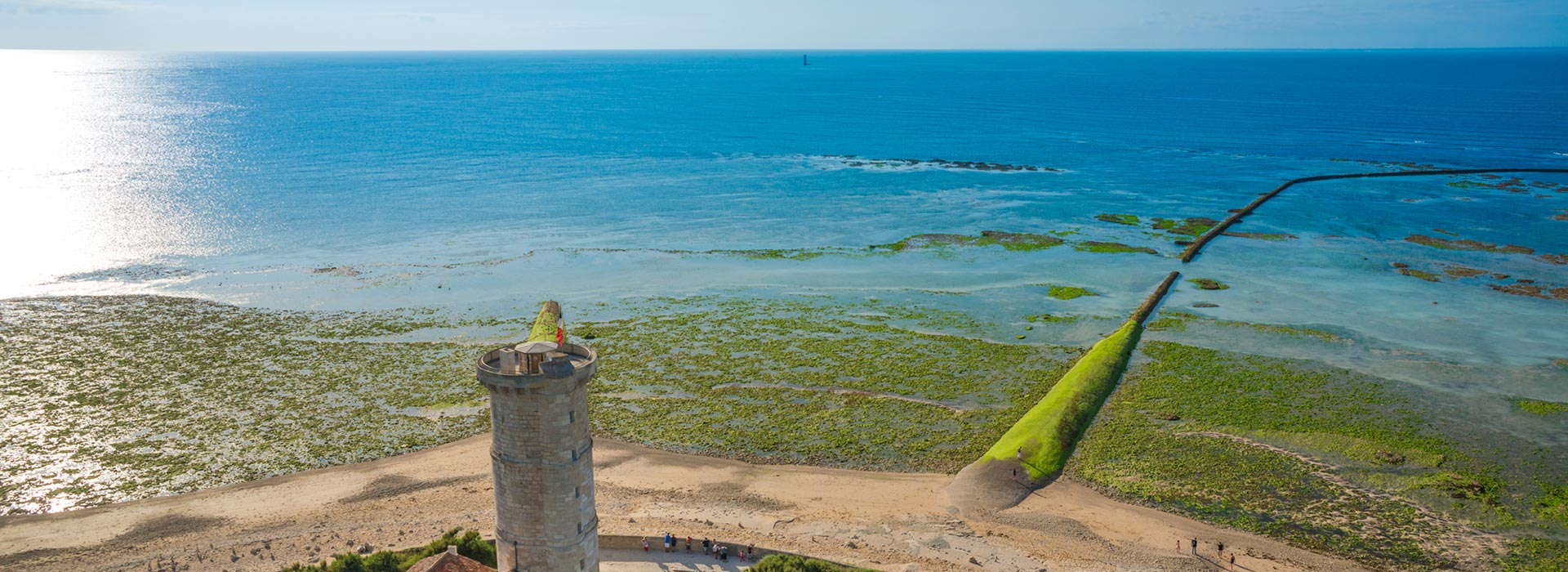
5 good reasons to stay on the Ile de Ré ?
- The sea and the coastline are of course the main attractions of Ile de Ré tourism.
- The charming fishing ports of Ars-en-Ré, Saint-Martin-de-Ré and La Flotte live to the rhythm of the tides.
- The Ile de Ré also owes its reputation to its salt marshes. Located mainly in the northern part of the island, these sites are home to an important variety of plants and are sources of food for birds.
- Whether you travel on foot or by bicycle, you will certainly appreciate the peaceful atmosphere around the salt flats. Take advantage of this trip to learn more about the traditional techniques of salt production, especially the fleur de sel.
- Ile de Ré tourism also seduces for its numerous flavors.
The villages of the Ile de Ré
Several villages make up the Ile de Ré to satisfy your thirst for history and change of scenery. You can rent a bicycle during your stay at our campsite on the Ile de Ré , and take advantage of the many bicycle paths that go all around the island.
You will have the opportunity to see the Lighthouse of the Whales, the Ecomuseum of the salt marshes, the Cooperative of the Wine growers of the Ile de Ré, the ornithological reserve of Lilleau des Nige, the bell tower Bicolore, the bandstand, the fish locks, the wood of the “trousse chemise”…
There is already a lot to see during your stay on the Ile de Ré , but if you have already managed to see all the rich cultural heritage and postcard landscapes, other destinations not far from the island await you.
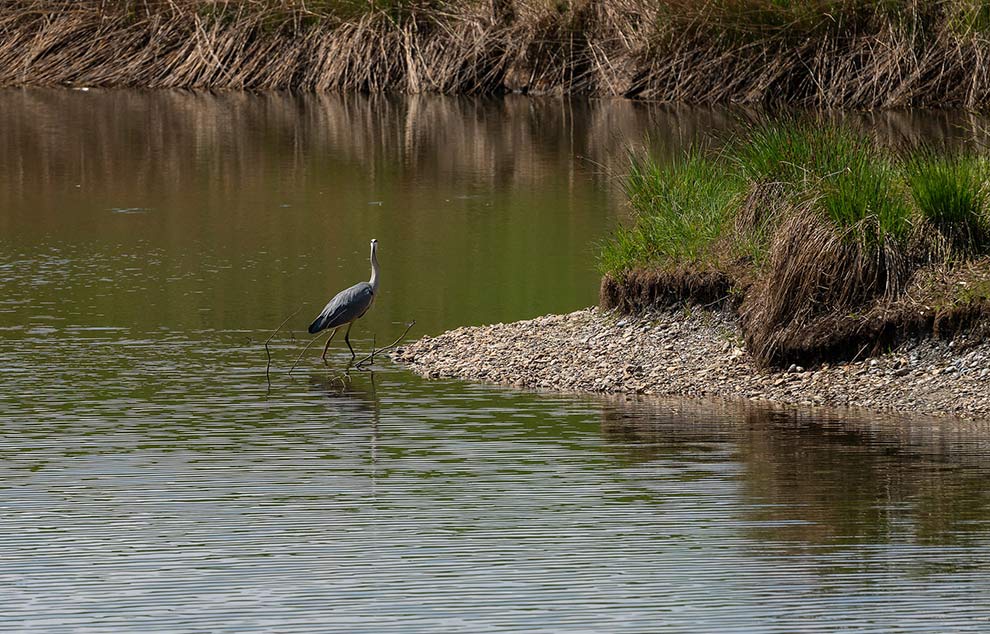
Nature and landscapes on the Ile de Ré
True “pearl of the Atlantic”, the Ile de Ré is home to a mosaic of fascinatingly beautiful landscapes. The island is home to more than 200 species of birds, including wintering (sixty-five species) and migratory birds (fifty-six species).
La Ré Blanche is also home to woodland and grassland birds, including avocets and elegant stilts. The nature reserve of Lilleau des Niges, a structure managed by the League for the Protection of Birds (LPO), located in the north of the island, offers among other things guided ornithological tours throughout the year.
The foreshore is also part of the Ile de Ré tourism must-see area, home to several animal and plant species. It is a site that children love to explore and where they can find shellfish: periwinkles, mussels, clams, crabs, shrimps, starfish… At high tide, when the currents are strong, these rocky plateaus that stretch as far as the eye can see become the haunt of local fishermen, who go there as much for the crabs and shrimps as for enjoying this beautiful setting.
Discovery of the salt marshes
The salt marshes are part of the must-see sites of Ile de Ré tourism.
They are composed of three main basins: the mudflat, the evaporation tank and the marsh.
These basins have been skilfully sculpted in the natural clay so that the water can circulate by gravity. The salt producers react to the slightest change in weather conditions each day, increasing or decreasing the flow of water to each basin.
The formation of salt is therefore entirely dependent on weather conditions and the harvesting season generally only lasts from June to September.
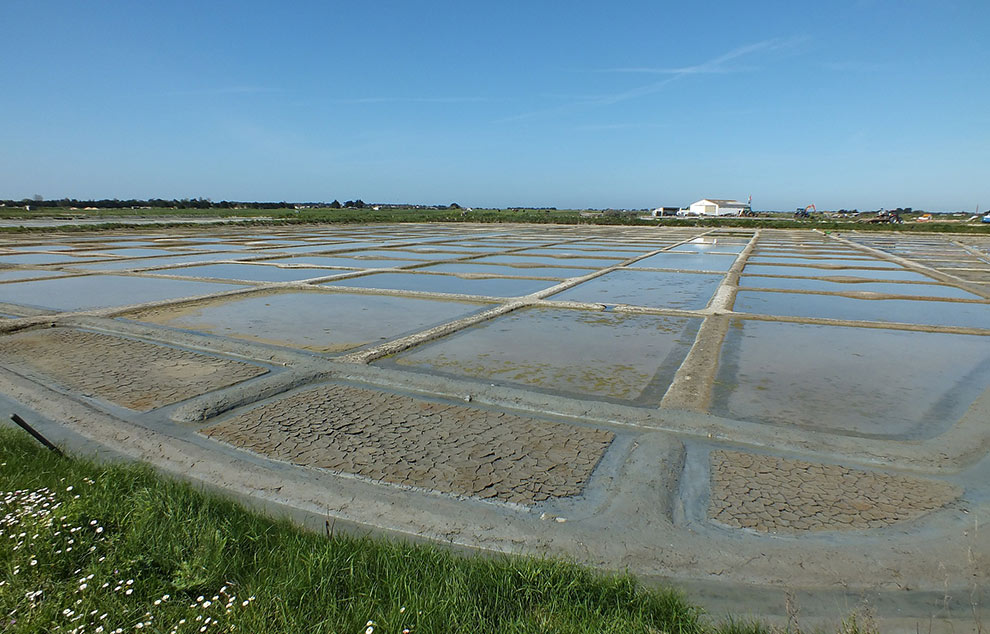
Ile de Ré : a family destination
Several sports and leisure activities in the middle of nature await the vacationers all year long.
The island offers unique experiences to sports enthusiasts as well as to those looking for a peaceful setting.
People come to the Ile de Ré to breathe the fresh air of the Atlantic, to recharge their batteries in the middle of nature and, more generally, to revitalize their minds and bodies.
Unforgettable vacations on the Ile de Ré
In a pleasant setting in the heart of the Charente Maritime department, it is always pleasant to abandon oneself to discovery and to let one’s senses soak up the atmosphere of the Ile de Ré (walks, fishing, discoveries for young and old).
Discover now the campsite Ile de Ré of Ile Blanche and come quickly to join us to spend your vacations in family or between friends on the Atlantic Coast!
The island is overflowing with a rich and enchanting cultural heritage that bears witness to several centuries of French history with its stone monuments and will delight the young and old alike during their vacations in Charente Maritime. Arriving by the bridge of the island, don’t miss to discover the different specialties of the island, such as oysters, sauniers and their fleur de sel or hollyhocks.
There is no shortage of activities on the Ile de Ré !
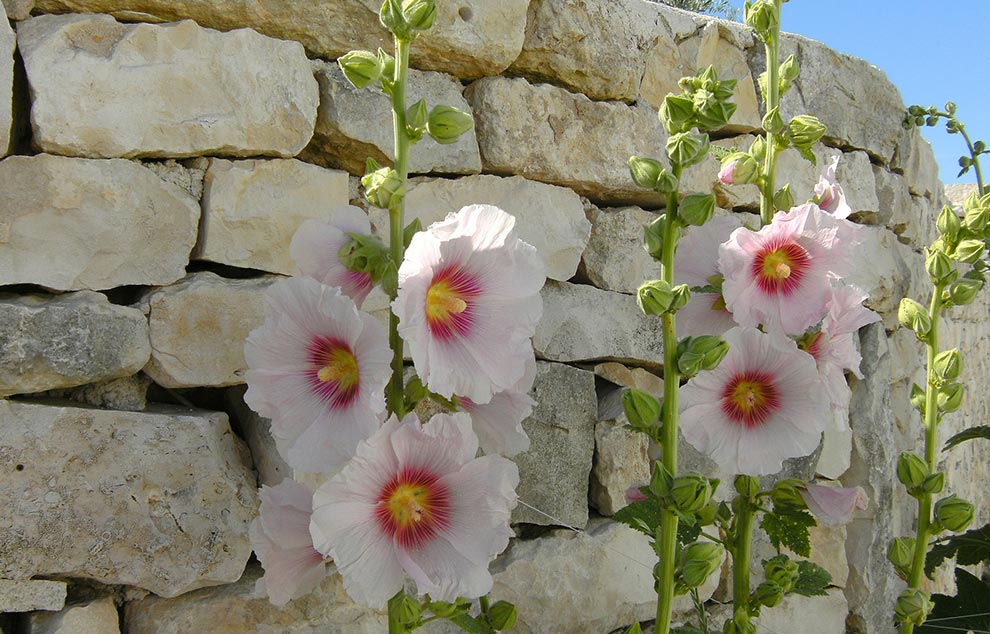
- Fortifications of Saint-Martin-de-Ré : 14 km of ramparts designed by Vauban, a defensive work intended to protect the coast of the Rhone and listed as a World Heritage Site by Unesco and is located near the old port.
- Ernest Cognacq Museum in Saint-Martin-de-Ré: a cultural space set up in a beautiful building classified as a historical monument to learn more about the history of the Ile de Ré, including wine and salt production.
- Fort La Prée in La Flotte : a military fortress built at the beginning of the XVIIth century, improved by Vauban and opened to the public during the beautiful days from April to September.
- Salt marshes : one of the singularities of the Ile de Ré, magnificent landscapes crossed by bicycle paths for the happiness of cyclists, hikers and curious people wishing to discover all the secrets of the salt production.
- Lighthouse of the Whales in Saint-Clement : very beautiful views on the island and the channels at more than 50 m high, and an interesting museum to learn more about lighthouses.
FILL UP WITH SENSATION
- Surfing : The coast of Ré la Blanche is dotted with famous spots such as the sandy beach of Grenettes in Sainte-Marie-de-Ré, the Pointe du Grignon in Ars-en-Ré, the Pointe du Grouin in Loix and La Pergola in La Couarde-sur-Mer. These beaches of the Atlantic Ocean are popular with surfers.
- Windsurfing and kitesurfing : In the south of the island, the beaches of Rivedoux and La Couarde are ideal for these water sports, with schools that offer courses and equipment rentals.
- Sailing : Most of the sailing schools (Loix, Bois-Plage, La Couarde) also offer catamaran, kayak and stand-up paddle trips.
- Cycling : The more than 110 km of cycle tracks allow you to reach all the villages of the island, to go along the coast, to cross the woods and the salt marshes.
- Horseback riding: Several riding centers such as the Haras Des Evieres in Bois-Plage, the equestrian center of Ré in Saint-Clément and the stables of Moulin Moreau in La Flotte for beautiful horseback rides on the beach or in the salt marshes.
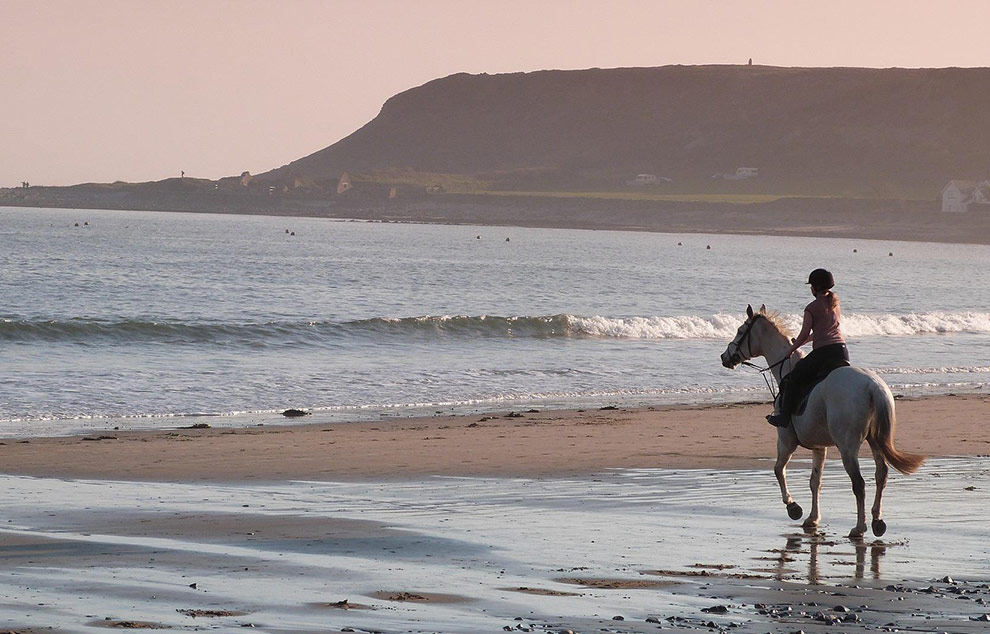
OTHER ACTIVITIES ON THE ÎLE DE RÉ
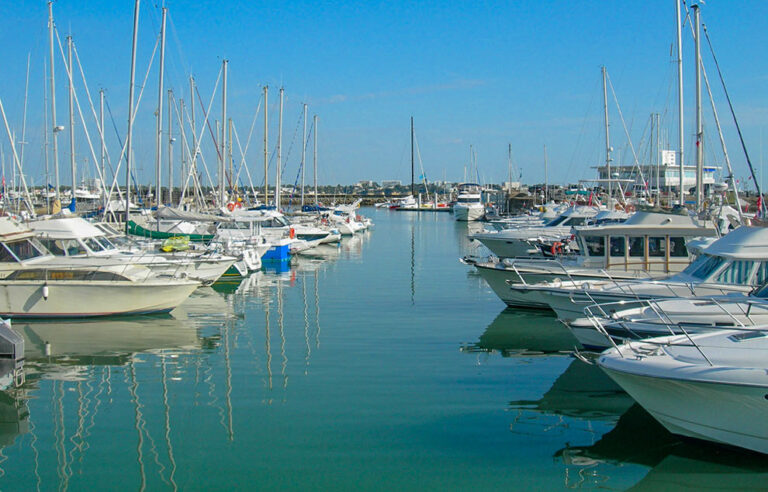
- Privacy Overview
- Strictly Necessary Cookies
- 3rd Party Cookies
This website uses cookies so that we can provide you with the best user experience possible. Cookie information is stored in your browser and performs functions such as recognising you when you return to our website and helping our team to understand which sections of the website you find most interesting and useful.
Strictly Necessary Cookie should be enabled at all times so that we can save your preferences for cookie settings.
If you disable this cookie, we will not be able to save your preferences. This means that every time you visit this website you will need to enable or disable cookies again.
This website uses Google Analytics to collect anonymous information such as the number of visitors to the site, and the most popular pages.
Keeping this cookie enabled helps us to improve our website.
Please enable Strictly Necessary Cookies first so that we can save your preferences!
Plan Your Trip to Paris: Best of Paris Tourism
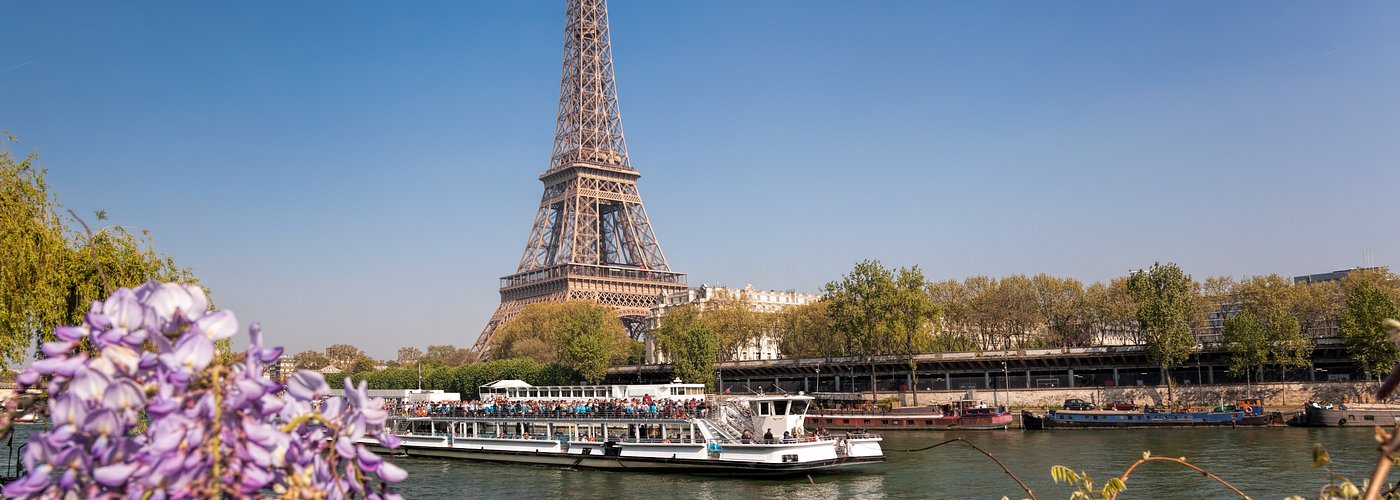
Paris, France
Travel advice, essential paris.
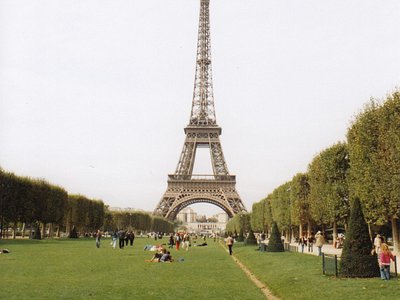
Where to stay
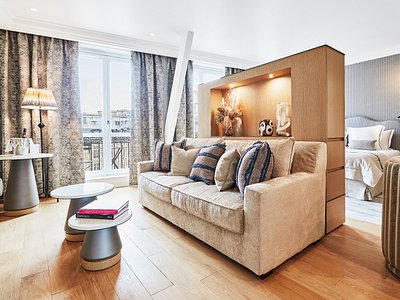
Where to eat

The perfect three days in Paris
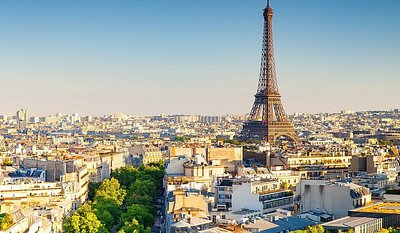
Trip ideas from our community

The perfect mother-daughter trip to Paris
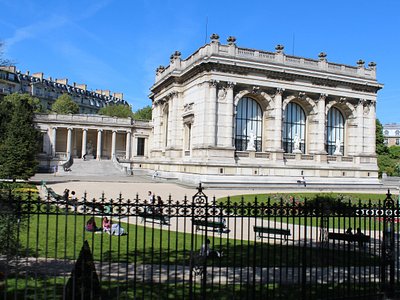
Browse collections

More great culinary capitals
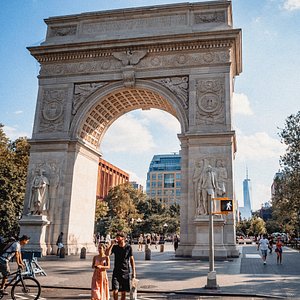
Paris Travel Guide
Travelers' pro tips or experiencing paris.

Try and speak French as much as you can! Even if Paris is an international city, we do like it when people talk to us in our own language or at least try to!

You will not be brought your bill after you finish in a restaurant or cafe. It’s considered rude and pushy. You need to ask for it.

luvplayacar
Pack small! … The buildings are old and the stairways are small and narrow and the elevators say they will fit 8, but not 8 US citizens with large luggage.
Make sure to buy your tickets to museums online and print them or have them ready to go on your phone. Also, read all of the details on your tickets, what way you don't wait an extra half hour in the yellow line instead of the short green line I was supposed to go to at the Eiffel Tower.
Paris is magical! From its pretty and remarkable landscapes to its inspiring cafes, Paris has a unique combination of traditional architecture, rich history, pleasant parks and squares, original cuisine and special spirit of life.

There is always something new and exciting to see here, whether you have been here once or several times.

In Paris, venturing off the beaten path is very easy, there are little gems hidden everywhere in plain sight.

You can discover a new city in Paris in every arrondissement. Every time I return I make sure to stay in a new and different part of the city and spend most of my trip exploring there.
What is the best way to get there?
Paris is served by two international airports: Paris-Charles de Gaulle (the second busiest airport in Europe) and Paris-Orly.
The Gare du Nord is a major transit hub for trains to Northern France and to international destinations in Belgium, Germany, the Netherlands, and the United Kingdom.
Do I need a visa?
If you’re visiting Paris from overseas, use the government’s Visa Wizard to see if you need a visa.
When is the best time to visit?
Summer (June to August): Summer is festival season in Paris, with highlights including Paris L'Eté, Fnac Live, and Solidays, while the Bastille Day fireworks draw huge crowds and the Paris Plages festival brings the beach to the banks of the Seine. Temperatures average highs in the 70s F (20s C) and lows in the 50s F (Teens C).
Alternatively, visit over the holiday season, when Christmas markets, NYE parties, and festive illuminations show the City of Lights at its most atmospheric. During the holiday season Paris sees average highs in the 40s and lows in the 30s (10 to 0 C).
Vélib' is a bike-share system with thousands of bicycle stations located across Paris and in some surrounding municipalities. Visitors can purchase a one- or seven-day subscription either at the docking stations or online .
RATP operates its metro and RER services daily from 5:30 a.m. to about 1:15 a.m (2:15 a.m. on Friday and Saturday). The metro system is the city’s local underground subway network servicing central Paris and the RER is the regional express network. More information about the network and fares can be found online .
RATP operates Paris’ local bus system daily from 5:30 a.m. to about 1:15 a.m (2:15 a.m. on Friday and Saturday). At night, the Noctilien night bus network takes over, operating 47 bus lines from 12:30 a.m. to 5:30 a.m. More information about the network and fares can be found online .
Hailing down a taxi on the street in Paris can be difficult so it is best to find an official taxi stand. You can also book a taxi online or on your smartphone here .
ridesharing
Uber and Bolt are readily available in Paris on your smartphone.
Cityscoot is an electronic scooter-sharing scheme which offers scooter rental through an app on your smartphone.
On the ground
What is the timezone.
Central European Standard Time
What are the voltage/plug types?
The standard voltage in France is 230V and the standard frequency is 50Hz. The plug has two round pins.
What is the currency?
Are atms readily accessible, are credit cards widely accepted, how much do i tip.
Tipping is not obligatory in France, however, a tip for exceptional service is always appreciated.
Are there local customs I should know?
The federal legal age for buying and drinking alcohol is 18 years old.
Walk to the right of the sidewalk and step off to the side of the sidewalk if you want to stop to check your phone, look up directions, or want to take in a view.
Public transport
Allow others to disembark before boarding, don’t take up more than one seat, and stand to offer seating to pregnant women or someone with a disability.
Try to speak the language
Learn a few basic phrases as a sign of respect. Locals will often switch to English for your ease and comfort but they appreciate the effort.
Always greet people
A courteous, formal greeting in French, “Bonjour, Monsieur/Madame,” is always appreciated — this includes shop attendants, wait staff, hotel staff, drivers.
Don’t talk loudly in public
It is considered rude and ugly.
Don’t expect fast service
Sales assistants in shops or wait staff in restaurants won’t approach you straight away — giving people time and space is an important part of French culture. Also, don’t expect wait staff to give you the bill when your meal is finished, you will have to ask for it.
- Hotel Malte - Astotel
- Hotel Therese
- Dandy Hôtel & Kitchen
- Pullman Paris Eiffel Tower Hotel
- Citadines Tour Eiffel Paris
- Bistrot Instinct
- La Jacobine
- Starbucks Opera
- Eiffel Tower
- Musée d'Orsay
- Louvre Museum
- Luxembourg Gardens
- Cathédrale Notre-Dame de Paris
- Eiffel Tower Guided Tour by Elevator
- Bateaux Parisiens Seine River Gourmet Dinner & Sightseeing Cruise
- Paris Seine River Dinner Cruise with Live Music by Bateaux Mouches
- Skip-the-Line: Louvre Museum Masterpieces Fully Guided Tour
- Seine River Guided Cruise with Snack Options by Vedettes de Paris
An official website of the United States government
Here’s how you know
Official websites use .gov A .gov website belongs to an official government organization in the United States.
Secure .gov websites use HTTPS A lock ( Lock Locked padlock icon ) or https:// means you’ve safely connected to the .gov website. Share sensitive information only on official, secure websites.

International travel documents for children
See what documents a child needs to travel to or from the U.S. alone or with a parent or relative.
Children traveling to the U.S.
All children, including infants, must have their own travel documents such as a passport or document from a Trusted Traveler Program to enter the U.S. If you travel or are going to travel with a child, consider taking the following documents:
- If the child is traveling with only one of their custodial parents, they must have a letter of consent, preferably in English and notarized, from the other parent or signed by both parents. The letter should say "I acknowledge that my son/daughter is traveling outside the country with [the name of the adult] with my permission."
- If one parent has sole custody of the child, a copy of the custody document can take the place of the other parent's letter.
- Parents who frequently cross the border by land with a minor must always carry a letter of permission from the other parent.
U.S. citizen children traveling abroad
Ports of entry in many countries have security measures to prevent international child abduction . If you are traveling alone with your child, you may be required to present documentation proving you are the parent or legal guardian. You may also need a letter of permission from the other parent for your child to travel.
If your child travels alone, depending on the country, they may be required to present a notarized letter from both parents or their legal guardian. If a minor is traveling abroad and is not accompanied by both parents or a legal guardian, contact the embassy or consulate of the country you will be visiting and ask about entry and exit requirements for that country.
LAST UPDATED: December 6, 2023
Have a question?
Ask a real person any government-related question for free. They will get you the answer or let you know where to find it.

COMMENTS
Ile de Ré's highest point. At Ile de Ré's westernmost tip, the 59m-high Phare des Baleines lighthouse has been safely guiding ships around the island edge since it was built in 1854. Once you've wound your way up the 257 spiral steps - and it is a bit of a slog - your reward will be views that stretch right back to mainland France.
Visit near Ile de Re with France This Way reviews. Saint-Martin-de-Re. On the north coast of Ile-de-Ré, the village of Saint-Martin-de-Ré is very pretty and has an attractive port. Saint-Martin-de-Re guide. La Flotte-en-Re. The village of La Flotte-en-Ré is a pretty village on the Ile-de-Ré. La Flotte-en-Re guide.
Unfortunately, France is not a super budget-friendly destination, but you can make your stay at Ile de Ré as expensive or affordable as you want, of course. Here's a small cost indication for Ile de Ré. Camping: 20 euros per night. Parking fees: 0 - 10 euros per night. Hotel: 60 - 100 euros per night.
Ile de Re is also a paradise for outdoor enthusiasts. Cycling is particularly popular, with more than 100 kilometers of dedicated cycle paths that traverse the island, taking visitors through salt marshes, quaint villages, and scenic coastlines. The island's calm, shallow waters make it an ideal location for sailing and windsurfing, while its ...
Here's your guide to the best things to do in Île de R ... Hôtel de La Marée - Ile de Ré. Watch the Ile de Re travel video. Enjoyed reading this complete guide to Île de Ré? Pin this article now, read it again later: Sophie Nadeau loves dogs, books, travel, pizza, and history. A Francophile at heart, she runs solosophie.com when she ...
Des souvenirs de l'Ile de Ré dans nos boutiques ! Réservez vos expériences et activités sur l'Ile de Ré ! iledere. Contacter l'office de Tourisme Destination Ile de Ré. Rue des Embruns 17580 LE BOIS PLAGE EN RE +33 (0)5 46 09 00 55. Nous écrire; Galerie d'images; Inscrivez-vous à notre newsletter.
7 places not to be missed on the Ile de Ré ! 1. The bridge of Ile de Ré. By crossing it, you will have an outstanding view of the northern side of the island. Almost 3km long, it is an integral part of the landscape of the island. Below, on the beach of Rivedoux, you will feel very small in front of this concrete giant.
Things to Do in Ile de Re, France: See Tripadvisor's 115,524 traveller reviews and photos of Ile de Re tourist attractions. Find what to do today, this weekend, or in June. We have reviews of the best places to see in Ile de Re. Visit top-rated & must-see attractions.
4 FERS A L'AIR 8 chemin du Peux Pinson, Sainte-Marie-de-Ré, Ile de Ré (00 33 5 16 19 75 63; www.4fersalair.com ). SWIMMING. The island has beautiful sandy beaches, with super-calm, super-blue water. Visit La Flotte, on the south-east coast and Conche des Baleines, on the north-west coast. WALKING.
Doubles from €165. Le Corps de Garde Boutique B&B on a quiet part of the quay, with beautiful public spaces and seven delightful bedrooms overlooking the water. Decor is shabby-chic: lace, weathered wood and solid old furniture. 1 quai Clémenceau, Saint-Martin (00 33 5 46 09 10 50).Doubles from €120.
Discover the wealth of Ile de Ré with a range of activities and recreational pastimes for your short break or holiday. There's never a dull moment on Ile de Ré! You need an advice to make your choice or to help you in your search, don't hesitate to contact us +33 (0)5 46 09 00 55 ! Tourisme & Handicap.
Insiders Guide to the Ile de Re. St Tropez on the French Riviera and the Ile de Ré, Charente-Maritime share several features - the same number of hours of sunshine for instance. Both attract a lot of tourists and celebrities in summer. But in other ways they could not be more different: bling-bling, showing off and the international jet-set ...
La Cabane De Tony. 69. ££ - £££ • Speciality Food Market, Seafood, French. L'Escale. 257. ££££ • French, Seafood, Vegetarian Friendly. Ile de Re Tourism: Tripadvisor has 115,585 reviews of Ile de Re Hotels, Attractions, and Restaurants making it your best Ile de Re resource.
Contact the tourist office Destination Ile de Ré. Discover, organize, book and share your holidays on Ile de Ré thanks to Destination Ile de Ré: rentals, hotels, restaurants, tours, activities.
An insider's boutique hotel guide to Ile de Re with top tips, travel info, suggested itineraries and maps. Travel Guide to Ile de Re ... Travel Info; Ile de Re: Why go. Joined by a vast bridge to the mainland, the Ile de Ré is only a hop, skip and a jump from La Rochelle, but it feels a million miles away from bustling city life. This is one ...
Destination Guide to Île de Ré, France. Just 19 miles by five, the tiny Île de Ré punches well above its weight. The pace slips down a few gears on this seahorse-shaped island, cast adrift from La Rochelle. A web of hollyhock-lined cycling trails connects pretty harbour villages, scattered between pine forests and vineyards, while oyster ...
At low tide many of them are punctuated with locals prying shellfish out of the sand, a long tradition on the Ile de Re. Others are famous for surfing, sailing, and kitesurfing, and still more for their dunes and views. On my first day I cycle over 25 miles (40 kilometers), determined to see the remote village of Loix and its famous salt marshes.
Our guide to Ile de Ré. By Simpson Travel. 23 Mar 2020. Where to go. Just off the west coast of France near La Rochelle, life on Ile de Ré is a civilised affair. The picturesque towns and villages blend culture with good-living, bistros and bars enjoy the elegant laissez faire that only the French can muster, and the locally harvested oysters ...
Boat ride. You're on an island, it's de rigeur to take a boat ride surely! And there's plenty of choice from speed boat rides to inter island cruises, fishing trips and yachting. Boat rides can be booked at Saint-Martin, Ars, La Flotte and Portes-en-Ré (details on Ile de Ré Tourist Office website, bottom of this post).
Accessible only by ferry until 1988, today the Île de Ré is a 40-minute taxi ride from the Gare de La Rochelle via a bridge that joins the island to a swath of mainland given over to heavy industry.
The Ile de Ré in a few words. Located between the Antioch and Breton inlets, the Ile de Ré, with an area of 85 km², is the fourth largest island in mainland France, behind Corsica, the Ile d'Orléon and Belle-Île. Jewel in the crown of Charente-Maritime, the Ile de Ré is appreciated for its fine sandy beaches and has ten traditional ...
188 reviews. 196 helpful votes. Looking for a fairly specific Private Guide. Jun 9, 2024, 11:12 PM. Hi all: Now that our itinerary is set, we're down to details. I'm looking for recommendations for a private guide who will pretty much do the following... 1> Be able to arrange the 'VIP' tickets to the catacombs in advance to see the 'restricted ...
Paris, France. Paris lives up to its hype: A city with unbelievable food and culture, plus stunning views everywhere you turn. With 18 arrondissements, it's a lot to see in one trip, but each neighborhood has a personality all its own. You can't miss the iconic 7th, where art and history meet—there's the Eiffel Tower, sure, but the ...
Children traveling to the U.S. All children, including infants, must have their own travel documents such as a passport or document from a Trusted Traveler Program to enter the U.S. If you travel or are going to travel with a child, consider taking the following documents: If the child is traveling with only one of their custodial parents, they ...